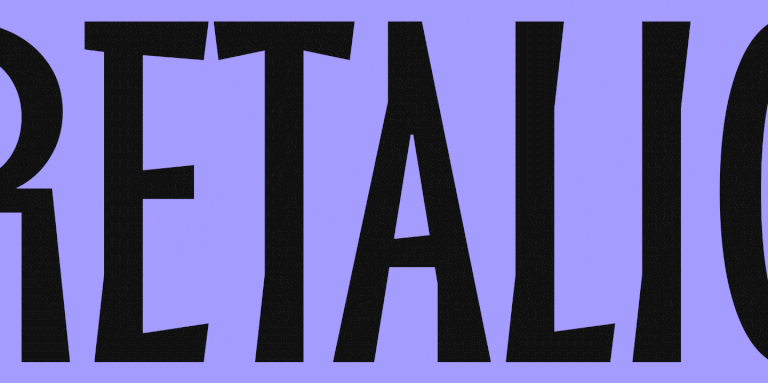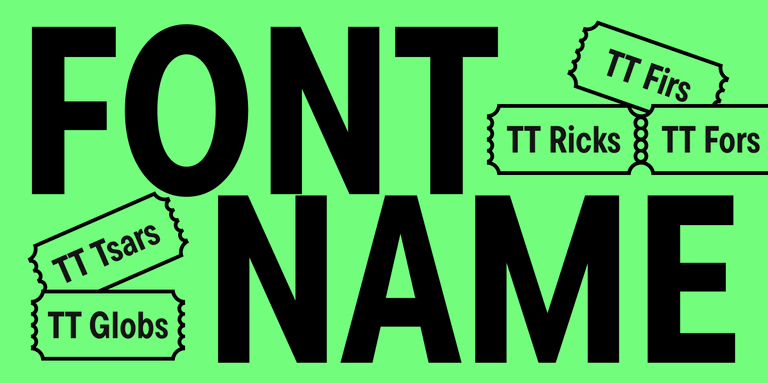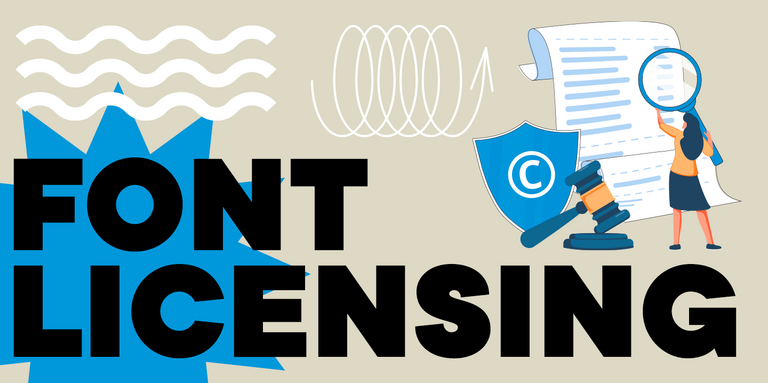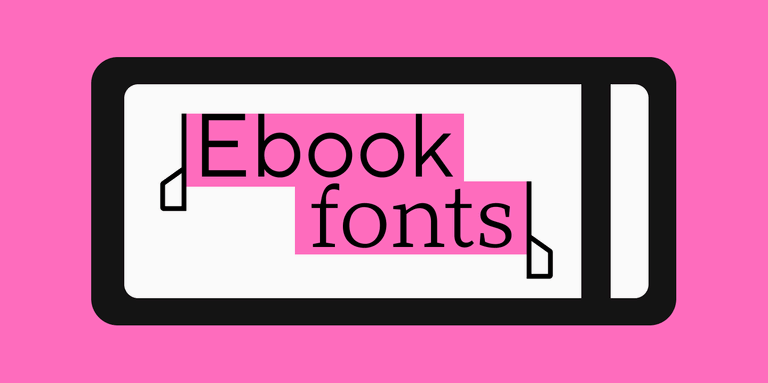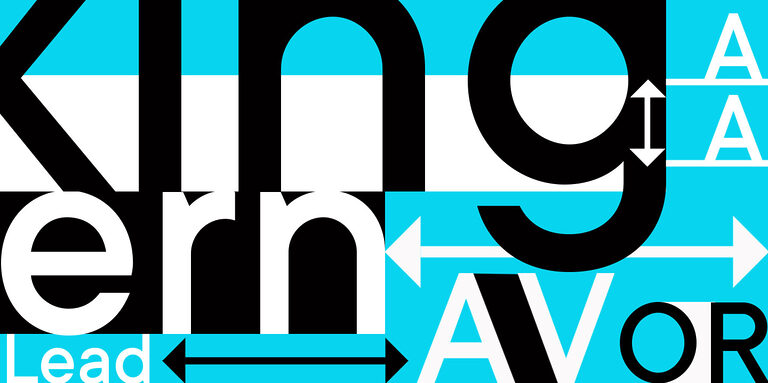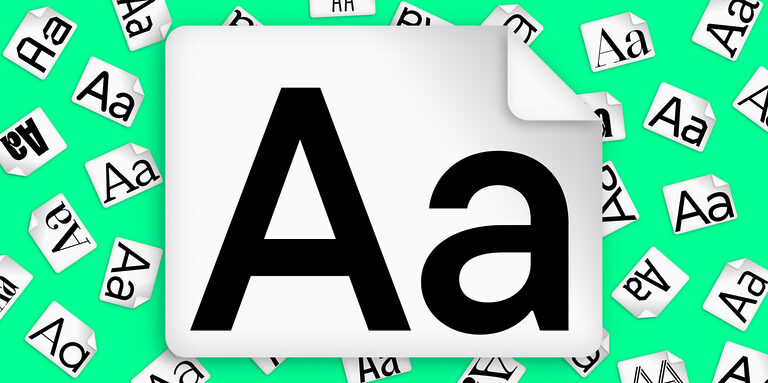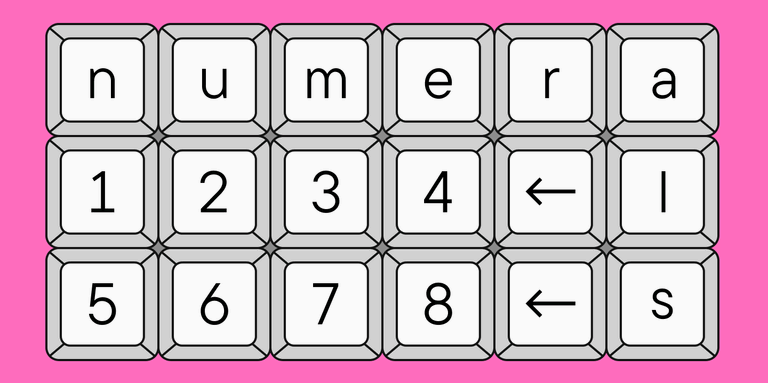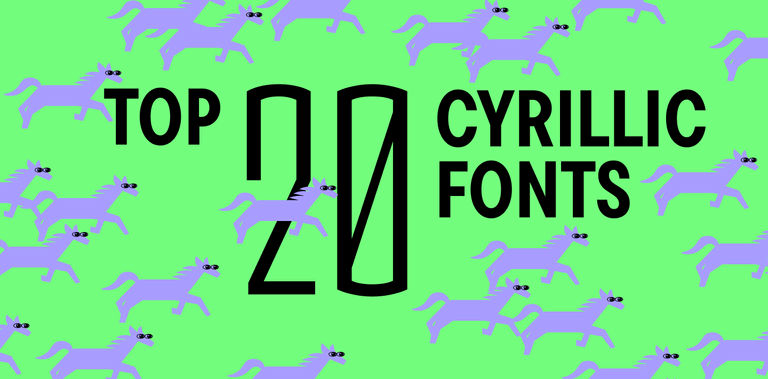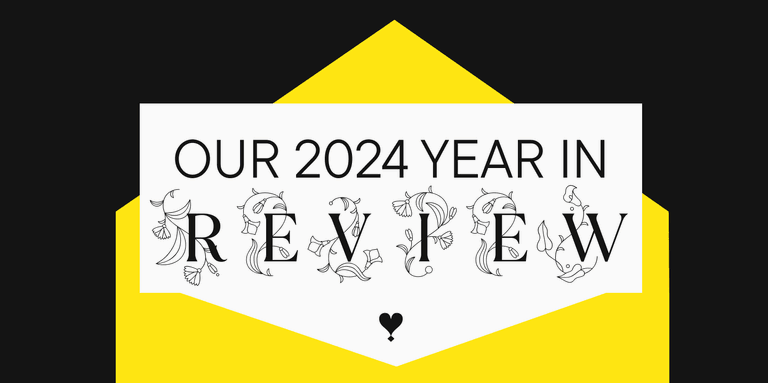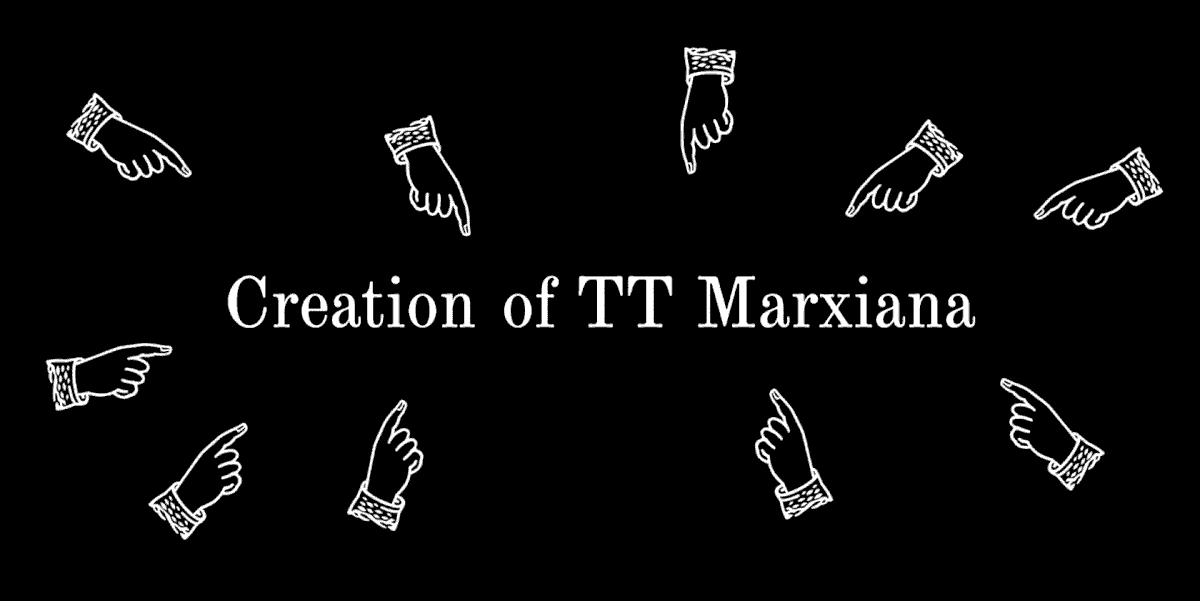
Nos complace presentarles la historia de la creación de la familia tipográfica TT Marxiana.
TT Marxiana es un proyecto de reconstrucción tipográfica de fuentes prerrevolucionarias. Estas fuentes se usaron en la maquetación de la revista “Niva” (nee-vah, “Campo cultivado”), publicada por la editorial A. F. Marx en San Petersburgo. En nuestro proyecto decidimos centrarnos en un conjunto muy específico de fuentes utilizadas para la preparación e impresión de la revista “Niva” en 1887: Antiqua, Antiqua Italic, Grotesque y Elzevir.
En el proyecto TT Marxiana, nuestro objetivo fue preservar el carácter histórico estricto de las fuentes y mantenerlas lo más fieles posible al original. Queríamos evitar cualquier tipo de “modernización” de las fuentes, excepto, por supuesto, el kerning, las funciones OpenType y el hinting manual. Como resultado, TT Marxiana es un conjunto completamente funcional de diferentes fuentes que permite al diseñador trabajar con software y metodologías contemporáneas para crear una revista con un diseño típico de finales del siglo XIX.
1. Inicio del proyecto
En el verano de 2018, comenzamos a pensar en lo fantástico que sería embarcarnos en un proyecto de revival (o reconstrucción) de varias fuentes históricas que estuvieron en uso hace un siglo o más. Pensamos que esto sería una valiosa contribución al conocimiento de la cultura rusa prerrevolucionaria, parcialmente perdida, y una excelente manera de presentar a los diseñadores contemporáneos un proyecto tipográfico verdaderamente histórico.
En el período que elegimos para nuestro proyecto, existían en Rusia varias imprentas grandes y bien desarrolladas, y el arquetipo cirílico ya había adquirido la forma que conocemos hoy. Además, a pesar de la pérdida de los conjuntos físicos de tipos, se han preservado muchos especímenes impresos de esa época, lo que significaba que podíamos encontrar las fuentes más interesantes allí.
En nuestra búsqueda de ideas, exploramos el período comprendido entre finales del siglo XIX y principios del siglo XX, centrándonos específicamente en las imprentas rusas prerrevolucionarias.
2. La biblioteca y las fuentes
Inicialmente, al planificar nuestras visitas a las bibliotecas, pensábamos que solo estudiaríamos las costosas ediciones de libros de lujo y buscaríamos en ellas las joyas tipográficas. De hecho, encontramos muchos especímenes tipográficos interesantes en los archivos y bibliotecas electrónicas.

Mientras investigábamos, nos dimos cuenta de que en los libros impresos por diferentes imprentas se podían encontrar las mismas fuentes o variaciones muy cercanas de estas.
Durante una de las visitas a la biblioteca, encontramos un libro editado por la editorial A. F. Marx, que se convirtió en el punto de partida de nuestro proyecto. En esa edición de tres volúmenes descubrimos un conjunto de fuentes que encajaban perfectamente con nuestra idea.
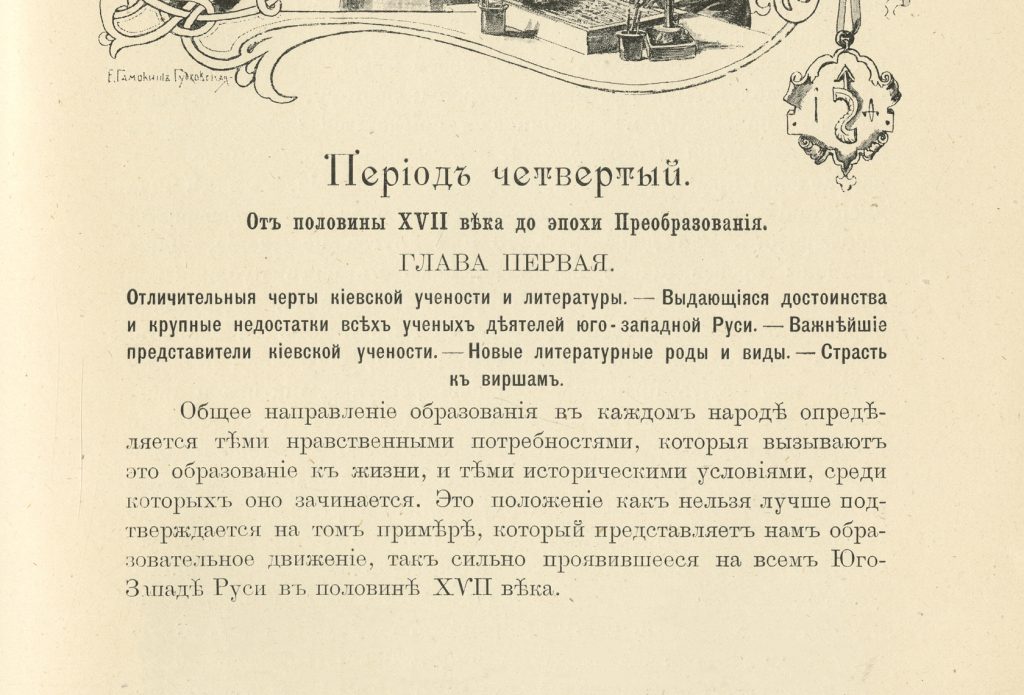
Tras este descubrimiento, decidimos crear un conjunto de fuentes que no fueran discordantes, sino que, por el contrario, se complementaran entre sí dentro de una visión unificada. Además, las fuentes debían ser completamente diferentes en estilo y poseer sus propias peculiaridades, como rasgos estilísticos, carácter, historicidad, emocionalidad, el espíritu de la época transmitido, entre otros.
3. Dibujando las primeras 3 fuentes, o la primera versión del proyecto
Inicialmente, solo planeábamos trabajar en un editor de fuentes, pero como era imposible realizar el trabajo necesario con referencias rasterizadas en dicho programa, trazamos todas las referencias en papel utilizando un editor gráfico. Este enfoque complicó nuestro trabajo posteriormente, ya que las curvas de Bézier en los editores gráficos no permiten la misma libertad de acción ni la preservación cuidadosa de los contornos de los caracteres, como lo hacen los editores especializados en fuentes. Sin embargo, esto fue suficiente para la primera etapa. Estos primeros bocetos digitales nos llevaron a reflexionar tanto sobre las propiedades principales de la fuente (proporciones, contraste, formas de las serifas) como sobre el concepto general del proyecto.
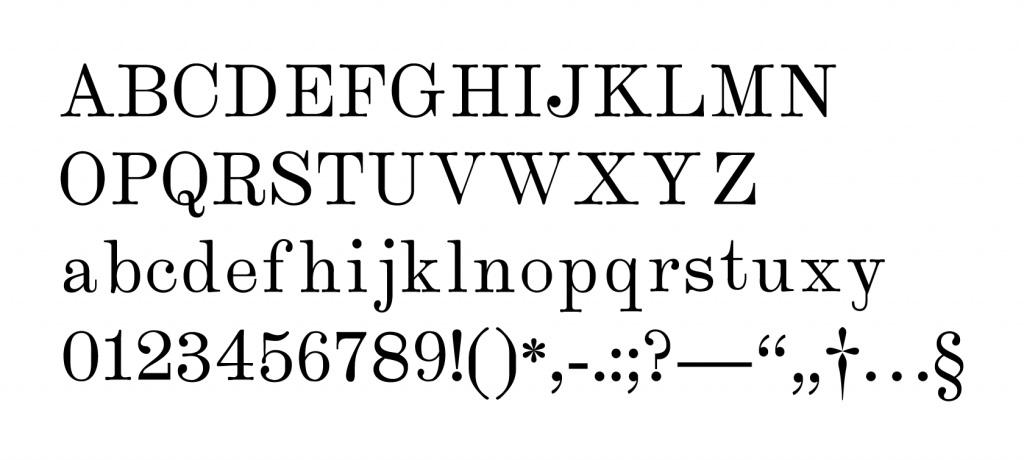
4. Trabajando en la fuente variable, o el callejón sin salida
Una vez que tuvimos los primeros bocetos, volvimos a discutir el concepto de nuestro proyecto. Reflexionamos sobre la composición de caracteres de la familia tipográfica y sobre la idea misma del revival (reconstrucción). La noción de revival tipográfico puede interpretarse de distintas maneras: por un lado, significa una coincidencia exacta con el original; por otro, implica una interpretación independiente del tema.
En ese momento, no teníamos muy claro qué dirección tomar. Podíamos haber creado una fuente independiente, con novedad artística y funcional basada en las referencias antiguas, o bien una fuente histórica completamente reconstruida, sin excesos ni caprichos personales.
Como resultado, escogimos el camino equivocado de la independencia artística: nos dejamos llevar por las tendencias y las nuevas posibilidades del software y decidimos desarrollar el proyecto como una fuente variable experimental.
La idea era bastante curiosa, y dedicamos mucho tiempo a encontrar las transiciones más orgánicas entre una fuente y otra mediante la variabilidad. Para lograr un flujo más uniforme, corregimos algunas formas de las serifas y otros detalles de las fuentes, lo que nos alejó aún más de la fuente original.

Así, teníamos un prototipo funcional que se veía extraño y peculiar, y nos dimos cuenta de que el proyecto no podía continuar en esa forma. Por lo tanto, tuvimos que replantear el concepto o alejarnos de las referencias gráficas prerrevolucionarias.
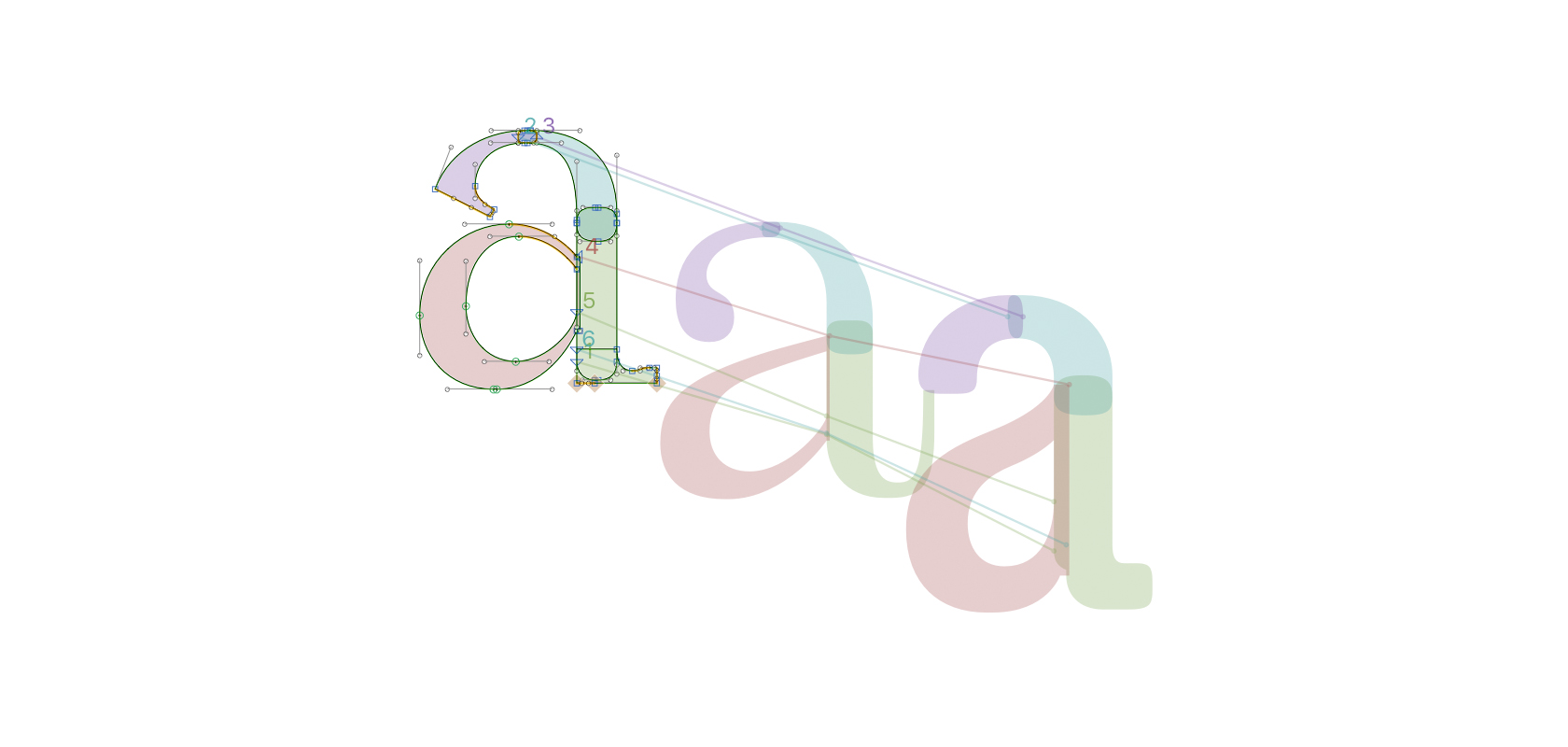
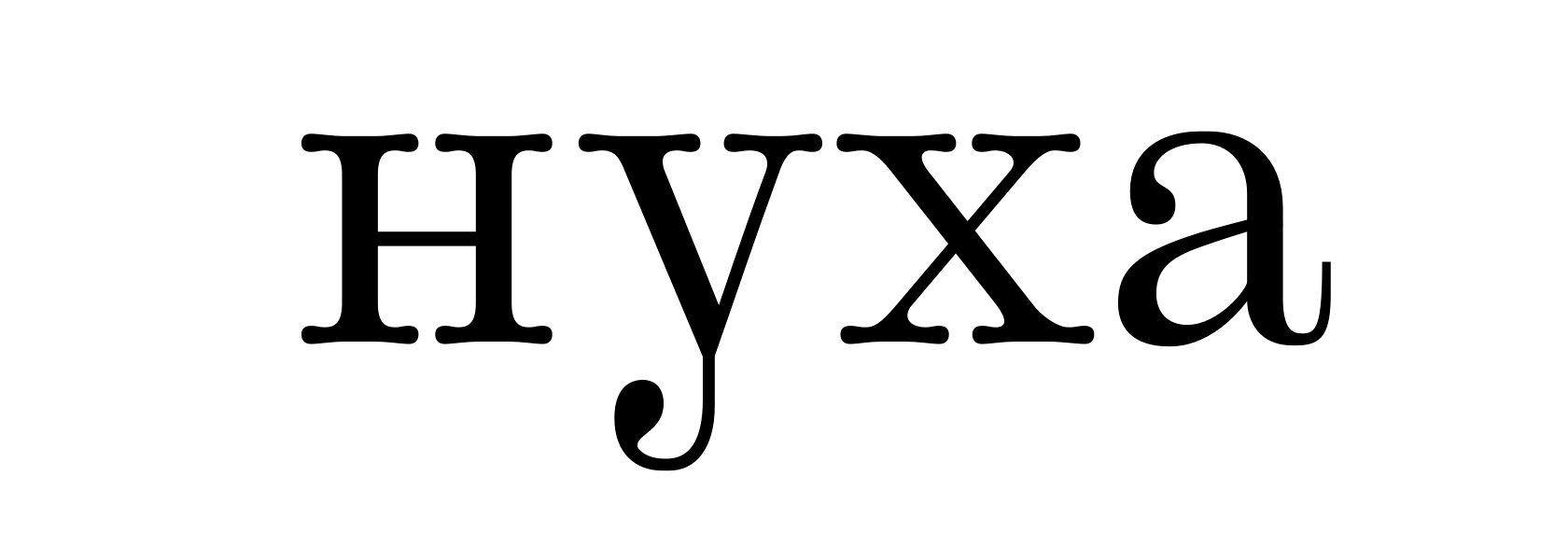
5. Abandonando la idea inicial y buscando nuevos conceptos
Un año después de su inicio, el proyecto tuvo un nuevo comienzo. Revisamos el concepto y adoptamos la revista “Niva” como referencia, que resultó ser una fuente perfecta para nosotros en términos de historicidad.
La revista “Niva” se publicó semanalmente desde finales de 1869 hasta septiembre de 1918 por la editorial A. F. Marx en San Petersburgo. Gracias a su asequibilidad y a la estrategia editorial de A. F. Marx, la revista fue muy popular y alcanzó cifras de circulación máximas (hasta 240.000 ejemplares).
Nos inspiró esta historia y nos atrajo la idea de crear fuentes que conservaran las irregularidades y la aspereza típicas de la impresión de finales del siglo XIX en las publicaciones modernas. Además, una de nuestras colegas encontró en el almacén de su casa de campo una colección de ejemplares de “Niva” de 1887, ¡así que literalmente nos sumergimos en el polvo de los siglos!
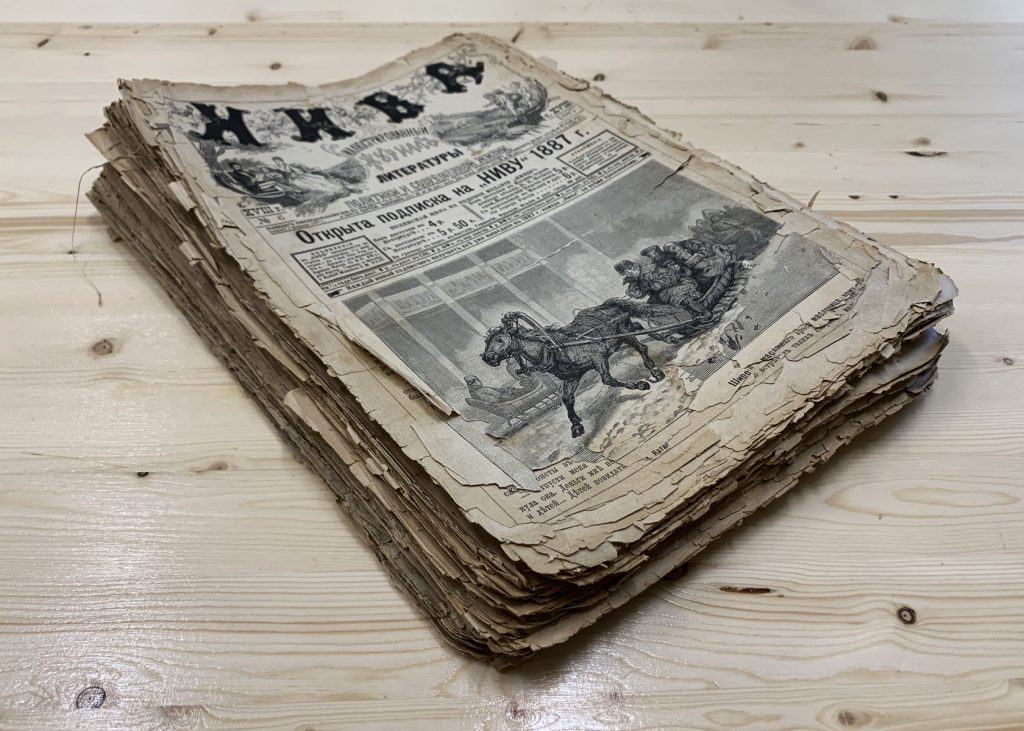
Las conclusiones a las que llegamos tras esta reconceptualización fueron las siguientes: las fuentes reconstruidas y enriquecidas con elementos artísticos modernos no son raras, pero las fuentes que son completamente idénticas a las históricas no son tan frecuentes. Por lo tanto, modificamos nuestra idea.
6. Trabajando con referencias en papel
Así que teníamos aproximadamente cincuenta ejemplares de la revista “Niva” en nuestras manos, y teníamos que decidir cómo continuar trabajando con ellos. En general, cada número de “Niva” puede dividirse en dos partes: la parte de contenido (artículos y ficción) y los extras (pasatiempos y publicidad). Lo mismo ocurría con el diseño: mientras que la sección de anuncios estaba llena de fuentes decorativas, cada una intentando ser más visible y llamativa que su vecina, la parte de contenido tenía un diseño muy conservador, con dos columnas completamente justificadas y encabezados centrados.
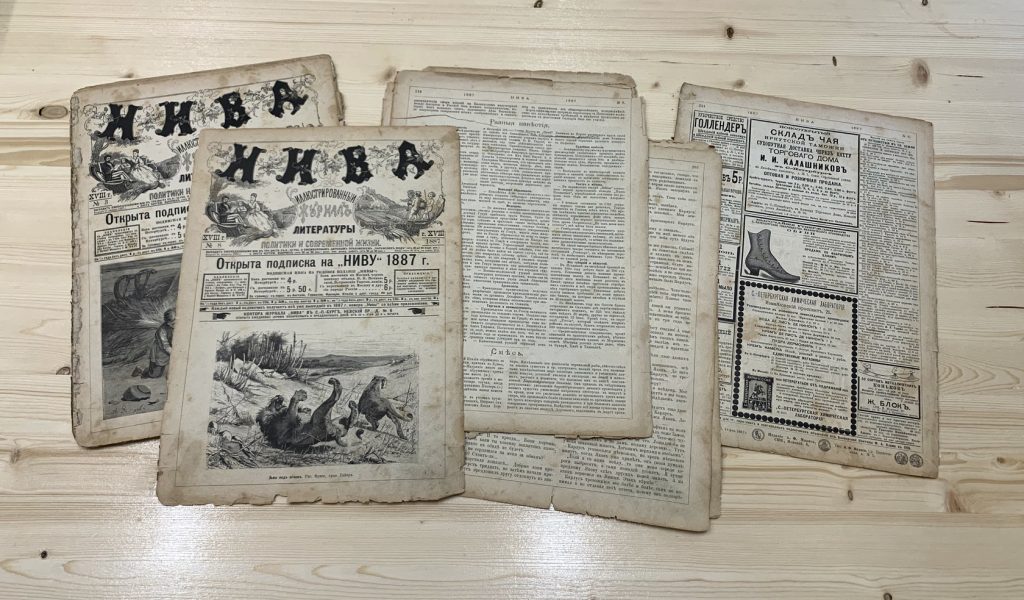
Nos centramos en cuatro fuentes principales: Antiqua, Antiqua Italic, Grotesque y Elzevir. La fuente Antiqua de la revista era bastante estrecha y tenía formas características en los caracteres б, л, д y у. Casi todas las páginas estaban formateadas utilizando la Antiqua como texto principal. El diseño de la Italic era muy similar al de la Antiqua, y la revista la utilizaba para resaltar partes específicas del texto. La Grotesque era bastante negrita y se utilizaba principalmente en subtítulos y pies de ilustraciones. La Elzevir se empleaba en todos los encabezados.

La fuente Antiqua se utilizaba en diferentes tamaños de punto en la revista, pero elegimos trabajar con el más pequeño (aproximadamente 8 puntos), ya que encontramos su ritmo y diseño especialmente fascinantes. En consecuencia, buscamos referencias para la mayor parte de la composición de los caracteres de la fuente en el tamaño pequeño, y si algunos caracteres solo estaban presentes en un tamaño de punto mayor, intentamos acercarlos a los caracteres más pequeños trabajando con el equilibrio entre el negro y el blanco.
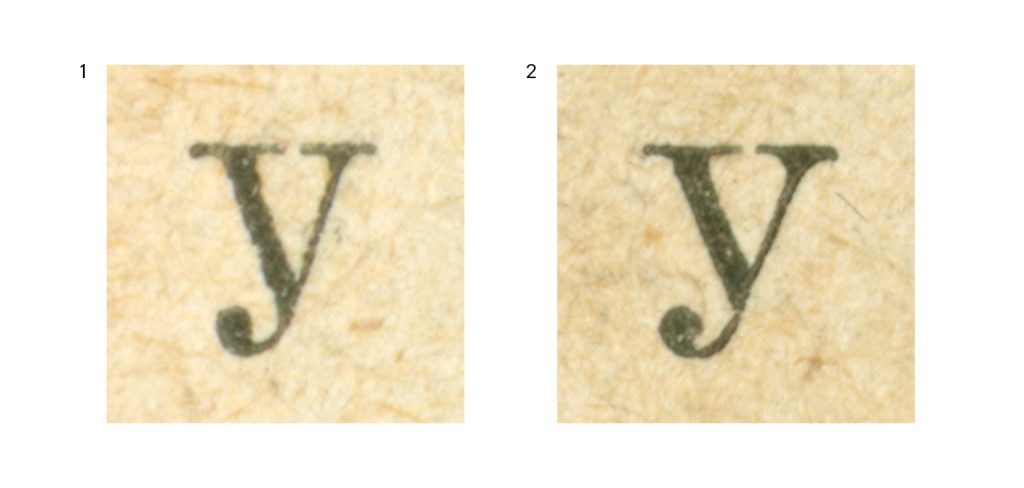
Recorrimos la colección de la revista “Niva” múltiples veces. Necesitábamos encontrar la mayor cantidad posible de caracteres, detalles y artefactos para incluir en nuestro proyecto.
Al estudiar la revista, nos encontramos con varios caracteres en los que la tinta se distribuía de manera desigual, una de las peculiaridades características de la impresión de esa época. A veces, cuando se imprimían de esa forma, algunos caracteres adquirían puentes adicionales, mientras que en otros se perdían ciertos detalles de las letras.
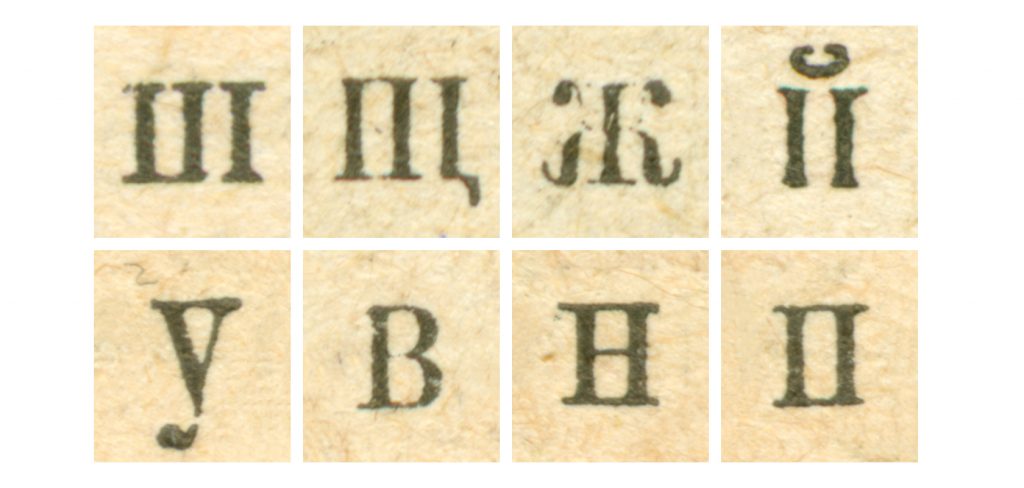
Decidimos preservar esta peculiaridad y creamos un conjunto estilístico separado con defectos de impresión, gracias al cual un diseñador contemporáneo puede experimentar los problemas que enfrentaban sus predecesores en la impresión.
Además del cirílico y el latín, las fuentes debían incluir una composición de caracteres ampliada: un amplio conjunto de signos de puntuación, caracteres especiales, símbolos de moneda, entre otros.
Puede parecer extraño, pero era totalmente posible reunir el alfabeto latino básico en una revista publicada en ruso. En primer lugar, debemos agradecer a los escritores clásicos rusos, quienes a menudo usaban frases en francés en sus textos. En segundo lugar, la revista “Niva” solía publicar artículos científicos, y muchos nombres y términos también estaban escritos en latín.
Sin embargo, a pesar de haber estudiado todos los números de “Niva” durante casi cincuenta años de su existencia, no pudimos encontrar todos los caracteres que necesitábamos. Entonces recurrimos a los catálogos tipográficos de finales del siglo XIX y principios del siglo XX. Esto resultó ser una buena idea, ya que pudimos llenar parcialmente los vacíos y encontrar una base para algunas de las decisiones que habíamos tomado.

La fuente Elzevir fue la más interesante en términos de recopilación de la composición de caracteres. La revista “Niva” solo la utilizaba en los encabezados, por lo que no teníamos una referencia del Elzevir en latín. Para encontrar referencias adecuadas, revisamos casi doscientos libros y catálogos y finalmente dibujamos el alfabeto latino.
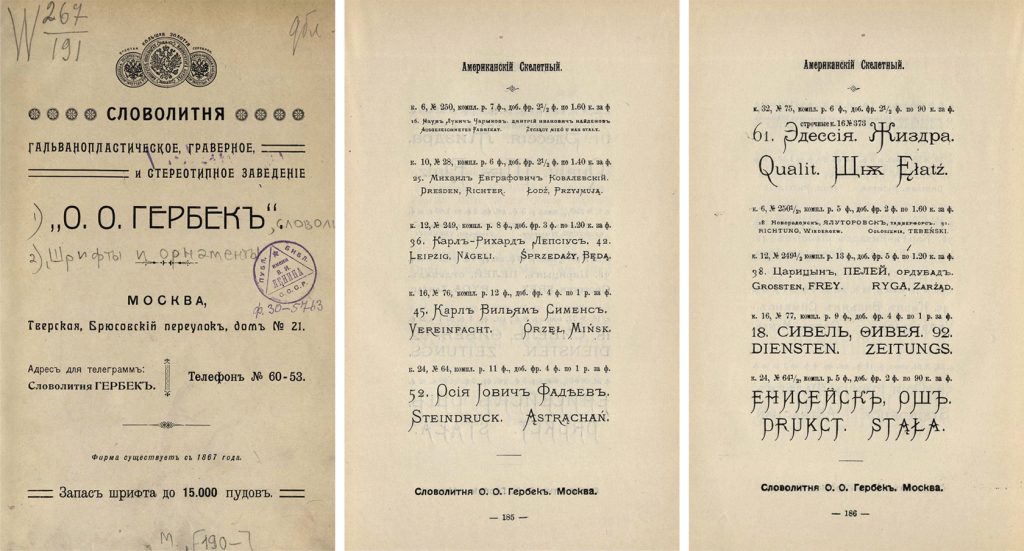
Durante nuestra búsqueda, también descubrimos que existían fuentes monásticas similares a nuestro Elzevir, que incluían tanto letras minúsculas como versalitas (en versiones anteriores). Además, en los primeros diez años de existencia de la revista “Niva”, los encabezados estaban compuestos en Elzevir con versalitas. Por lo tanto, decidimos unificar los tres casos tipográficos y añadimos también las versalitas.
Además, tuvimos nuevamente mucha suerte: uno de nuestros colegas encontró una reimpresión de los «Cuentos de Hauff» publicada por M.O. Wolff, que utilizaba Elzevir en los encabezados, y lo hacía precisamente con versalitas.
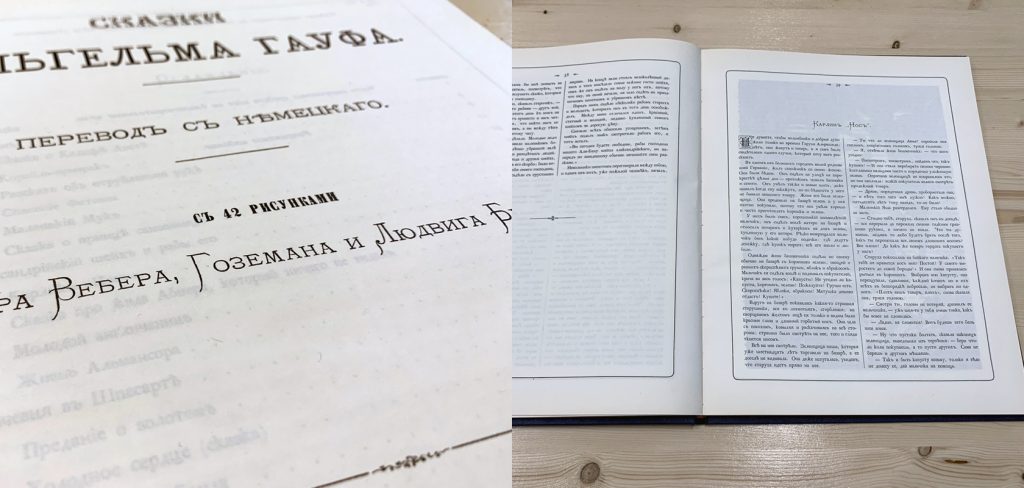
Queremos destacar por separado las páginas de anuncios de la revista “Niva”. Todos esos anuncios enmarcados, cada uno compuesto en su propia fuente, las ilustraciones de cámaras prerrevolucionarias y frascos de píldoras, así como otros elementos gráficos, son hipnóticos y transmiten plenamente el espíritu de esa época.
Realmente queríamos incorporar todos estos elementos decorativos en nuestra fuente, pero el sentido común prevaleció, y decidimos que menos es más, eligiendo no sobrecargar este proyecto ya voluminoso. Finalmente, optamos por añadir punteros de flecha, espacios, y marcos que pueden usarse como patrones de borde y esquinas decorativas, además de un conjunto especial invertido para la Grotesque.
Para hacer este conjunto aún más atractivo, lo complementamos con varios elementos decorativos del catálogo de la fundición tipográfica de O.O. Herbeck, cuya colección de fuentes y ornamentos coinciden con las utilizadas por la editorial A.F. Marx.
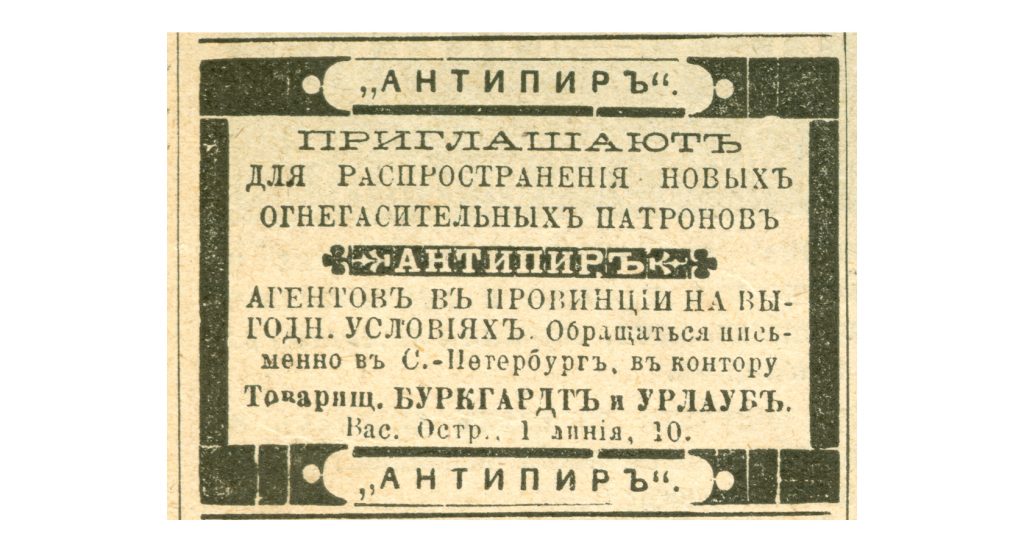
Paralelamente a la definición de la composición de caracteres, comenzamos a escanear las páginas de la revista. Intentamos hacerlo a una resolución de 2400–4800 dpi y, al principio, escaneamos las páginas completas, pero resultó ser extremadamente difícil trabajar con archivos de ese tamaño y el proceso de escaneo de una página tomaba muchísimo tiempo. Por ello, empezamos a escanear líneas individuales o incluso palabras específicas donde encontrábamos los caracteres que necesitábamos. Este trabajo llevó mucho tiempo, pero quedamos completamente satisfechos con los resultados.

7. Dibujando la Antiqua
Comenzamos a trabajar con la Antiqua transfiriendo los contornos de los bocetos del editor gráfico al editor tipográfico. Primero, seleccionamos los tamaños básicos de las letras: el grosor de los astiles y las alturas de las letras minúsculas y mayúsculas, de manera que sus contornos digitales coincidieran lo más posible con las proporciones originales de la configuración de la revista “Niva”.
Es notable que estas medidas —la altura de la x, la altura de la H y el grosor de los astiles — permanecieron sin cambios hasta la finalización del proyecto, mientras que las marcas de ascendentes y descendentes se modificaron más de una vez.
Esto se explica por el hecho de que el ritmo de la fuente y la impresión general de sus proporciones no son difíciles de captar, mientras que los remates a menudo están mal impresos o las líneas se desvían de la base, lo que dificulta estimar su altura con precisión.


Desde el primer día, quedó claro para nosotros que las serifas debían ser creadas como componentes de esquina. Esta solución nos permitió evitar interminables ediciones de los mismos elementos repetidos en la fuente. Básicamente, cada serifa en la fuente fue creada como un componente, por lo que cuando decidimos cambiar la forma de la serifa, no teníamos que editar cada glifo individualmente, sino solo el glifo con el componente de esquina.
Al principio, nos parecía que bastaría con hacer los dos componentes de esquina a partir de las dos serifas básicas y más frecuentes, a saber, la serifa grande para las mayúsculas y la serifa más pequeña para las minúsculas. En la práctica, resultó que no podíamos conformarnos solo con esos dos tipos de serifas, por lo que se añadieron más serifas de diferentes tipos y tamaños a la fuente. Además, decidimos crear componentes de esquina para otras características y elementos repetitivos en la fuente, como, por ejemplo, los recesos, que eran numerosos. Y dado que teníamos que preservar la sensación de la impresión antigua con su típica ganancia de puntos, inundación y deformación, terminamos con 20 componentes de esquina diferentes en esta fuente.
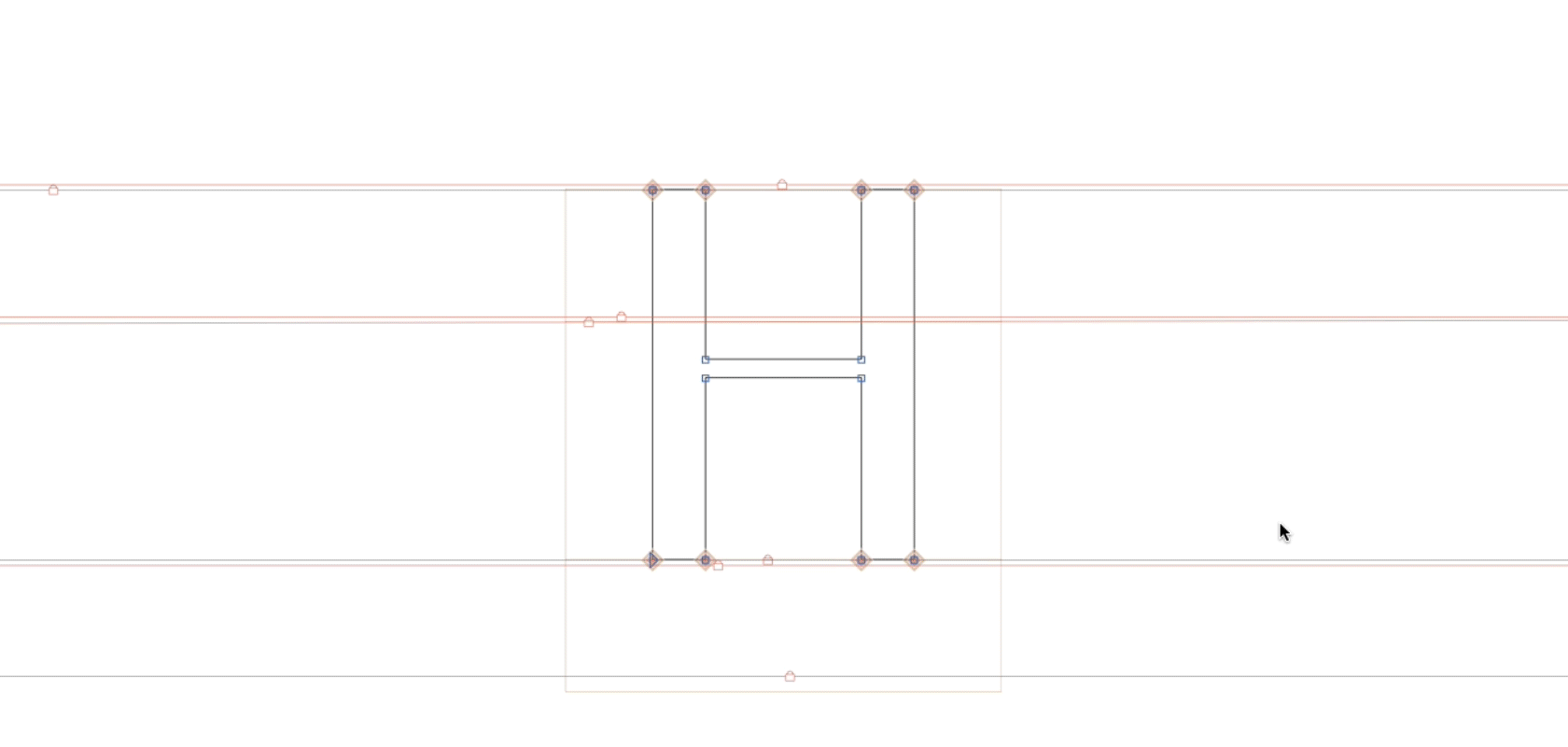
Resultó que dibujar una fuente basada en las páginas escaneadas de una revista centenaria es una tarea muy difícil. De hecho, tal reconstrucción es muy similar a una excavación arqueológica o a descifrar un código complicado, y todo este esfuerzo es necesario solo para entender qué pasos deben tomarse para que una fuente no sea solo una Antiqua cualquiera, sino la Antiqua muy específica y precisa de la revista “Niva”.
Además, debido a las peculiaridades de la impresión, los mismos caracteres en la antigua composición de la revista se veían completamente diferentes, lo que hacía la tarea aún más complicada. En algunos lugares, no había suficiente tinta y la letra de referencia no se imprimió bien y quedó demasiado delgada. En otros casos, había más tinta de la necesaria y la letra se inundó. Así que, para nosotros, era una tarea importante preservar ese toque de impresión tipográfica, pero, al mismo tiempo, descifrar la lógica unificadora y el carácter de las ganancias de puntos para que la fuente dejara una impresión orgánica y unificada, pero a la vez vivaz.
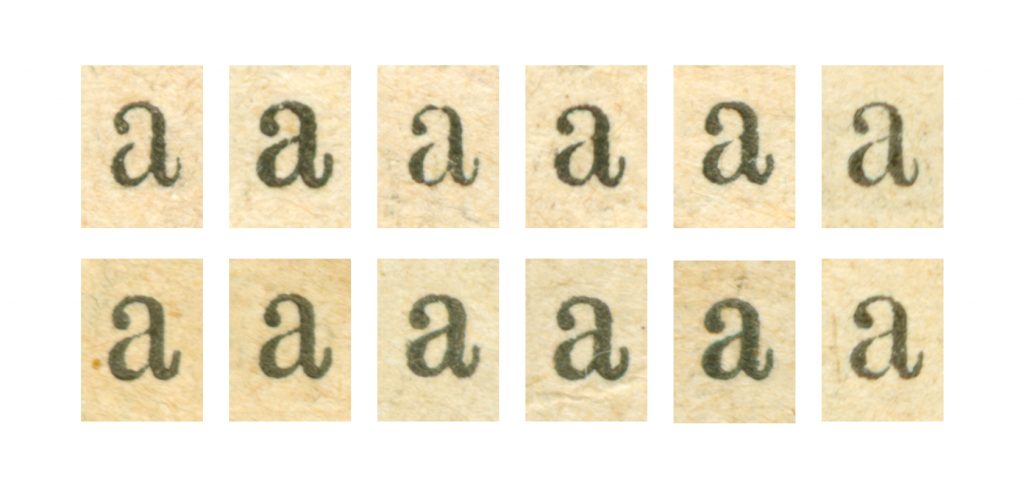
Faltaban algunos caracteres latinos en la revista, por lo que al dibujarlos recurrimos a los catálogos de fuentes de finales del siglo XIX y principios del XX. Nos interesaba principalmente el latín, ya que “Niva” no tenía muchos de estos caracteres. Así que, por ejemplo, las opciones para las germandbls fueron inicialmente dibujadas utilizando un catálogo como referencia, pero en el proceso de edición subsiguiente, adquirieron una forma más característica para nuestra fuente.
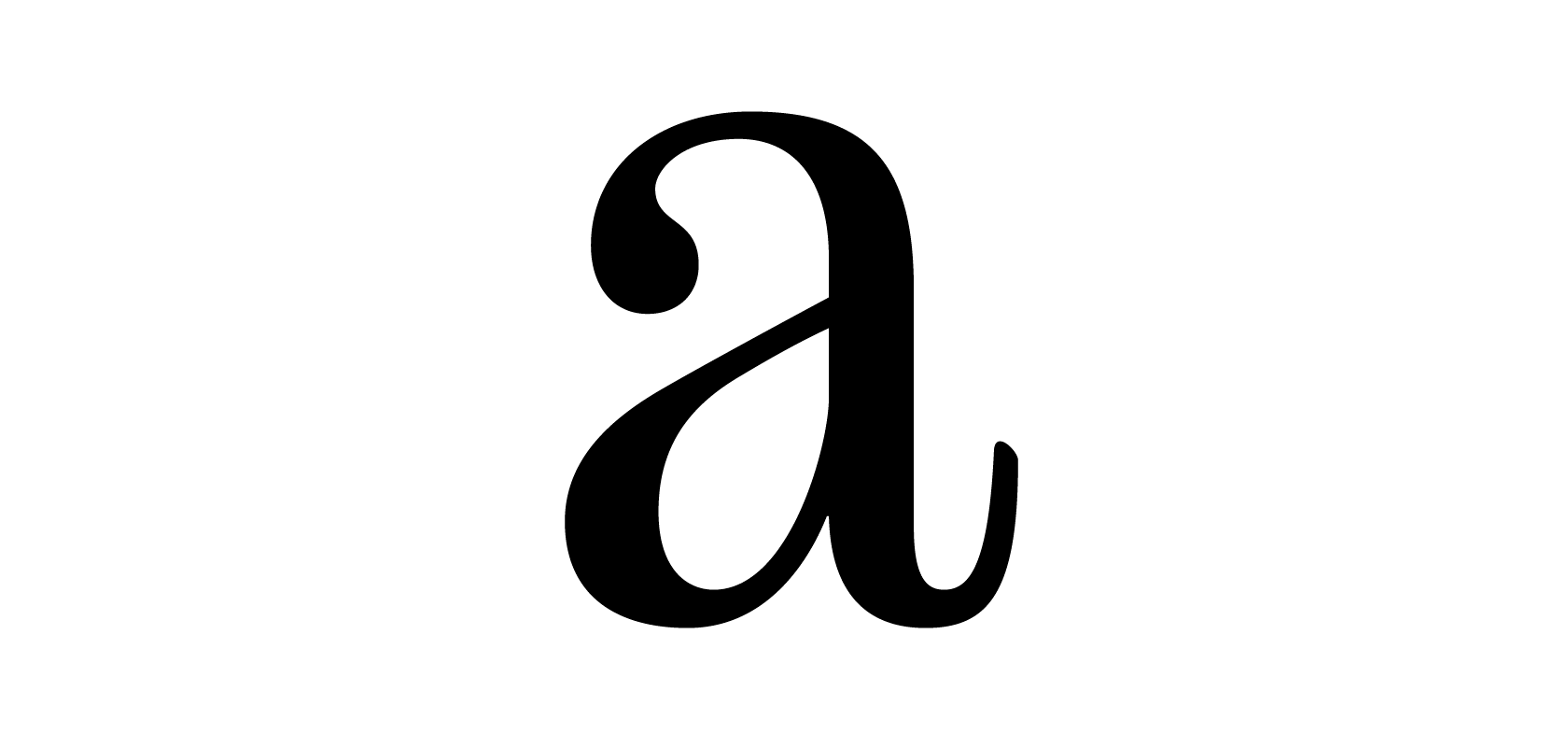

Por especial que fuera este proyecto, siempre volvíamos al proceso de creación de fuentes tal como lo conocemos: es decir, pensando en la fuente como un sistema en el que todos los caracteres viven e interactúan según ciertas leyes y reglas. Cuando teníamos un problema sobre cómo establecer mejor el contraste o cómo deberían verse los sobresalientes, tomábamos la decisión basándonos en nuestra experiencia, en primer lugar.
Pero incluso aquí nos esperaban sorpresas y descubrimientos. Cuando finalmente habíamos llegado a los contornos y proporciones con los que estábamos satisfechos, descubrimos que en el diseño de los nuevos caracteres había discrepancias en comparación con el diseño original. Las alteraciones en estos caracteres llevaron a otras ediciones, y de esta forma, toda la fuente fue significativamente editada una vez más.
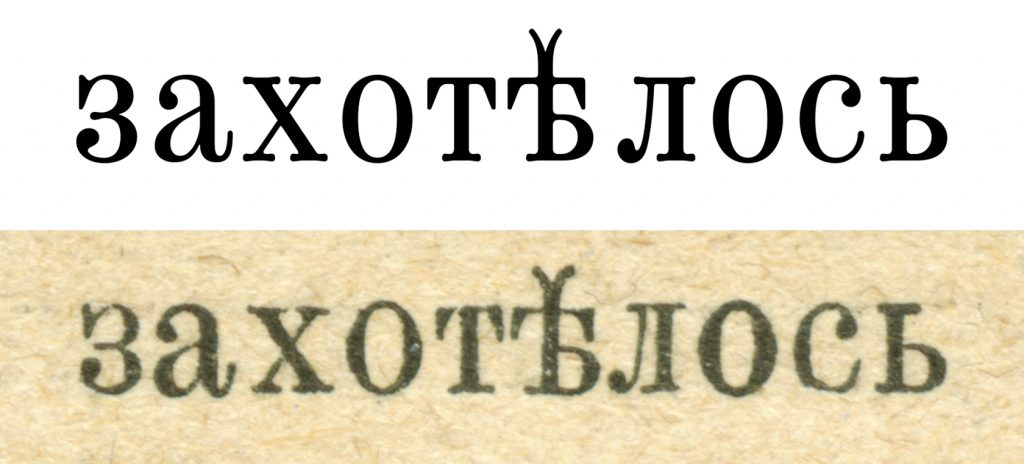
Lo más difícil fue trabajar con los caracteres redondos. Habíamos corregido el ancho de las horizontales en ellos varias veces, así como el tamaño de los sobresalientes, el ancho y la profundidad de las uniones. Era imposible elegir una sola medida para los elementos estrechos y mantenerla constante. Tuvimos que compensar constantemente los anchos de los caracteres para que la composición fuera homogénea en primer lugar y para que coincidiera visualmente con la fuente de la revista en segundo lugar.
Prestamos especial atención a los cuencos en la composición, ya que queríamos transmitir su estilo original lo más fielmente posible. Para hacerlo, vigilamos y corregimos parámetros de caracteres difíciles de captar como la cuadratura, la elongación, la forma de diamante y la redondez de los cuencos.
En muchas ocasiones, habíamos editado los remates en los extremos de los trazos porque, a diferencia de las serifas, los remates no eran componentes de esquina y se dibujaban para cada carácter individualmente. Si miramos la composición original, podemos ver que los remates de la mayoría de los caracteres son diferentes. Esto se debe a que estos elementos eran los más propensos a las irregularidades de la impresión tipográfica antigua. Para nosotros, era importante preservar la vitalidad y la dinámica de los remates y, al mismo tiempo, unificarlos y estandarizar su tamaño para lograr una mayor homogeneidad en la composición.

A pesar de todo el trabajo meticuloso, cuando comenzamos a probar la fuente en la composición y compararla con las páginas de referencia de “Niva”, nos llevamos una sorpresa desagradable. Sí, sin lugar a dudas, habíamos creado una Antiqua estrecha de texto de finales del siglo XIX, pero esta no era la fuente de la revista “Niva”. Tuvimos que observar y analizar cada carácter en la fuente para entender de dónde venía este aspecto y sensación diferentes de la fuente.
Aumentamos los sobresalientes en los caracteres redondos, los hicimos aún más puntiagudos, revisamos los remates una vez más y cambiamos la forma de las colas en а, к y otras letras. Aunque se veían bien en pantalla y en impresión, comparados con “Niva”, las uniones se veían demasiado oscuras y necesitaban ser repensadas y redibujadas.
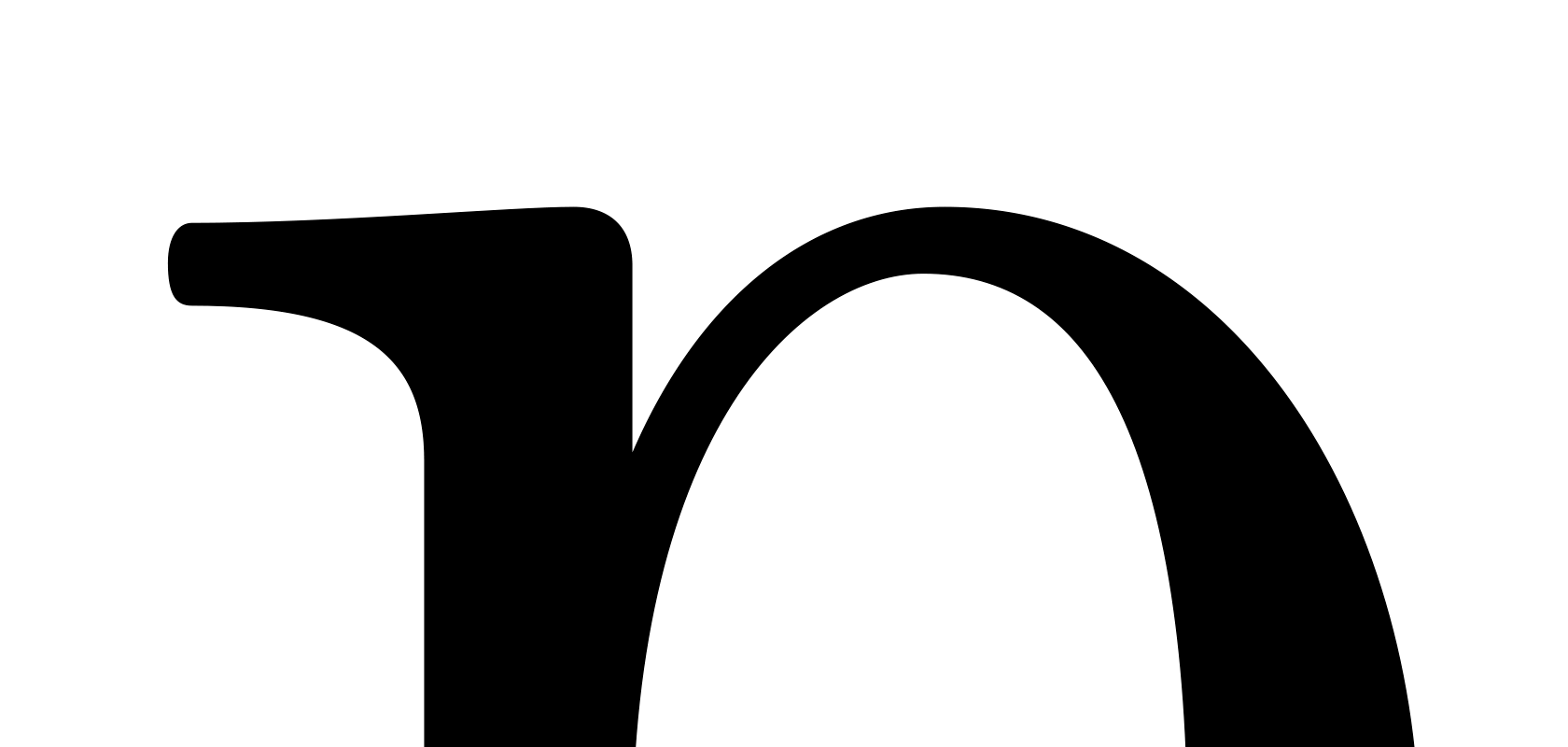
Cuando terminamos el trabajo sobre los contornos principales, decidimos añadir un conjunto alternativo de letras a la fuente imitando defectos de impresión.

Gracias al trabajo sobre la Antiqua, adquirimos una enorme experiencia y habilidades que pudimos utilizar más adelante en el trabajo sobre las otras tres fuentes de la familia tipográfica TT Marxiana.
8. Dibujando la Antiqua Italic
Invitamos a nuestro colega remoto a dibujar la Antiqua Italic. Le proporcionamos todos los escaneos y la Antiqua terminada como referencia para las medidas básicas.
El proceso de trabajo consistió en varios pasos: dibujar los caracteres básicos AOH, aoxiu, y su validación; dibujar los HANDGLOVES y НОБЕЛЬФАЙК que todos conocemos tan bien, y dibujar la composición completa de caracteres, varios caracteres a la vez. Al final, conseguimos el resultado final un poco más tarde de lo que habíamos planeado inicialmente.

Como solo encontramos la k minúscula latina utilizada una vez en la revista y se veía sospechosamente similar a la к cirílica, decidimos añadir una k latina alternativa en la fuente, que se vería más familiar para el usuario contemporáneo.

La versión alternativa de la letra latina “k”
En la primera etapa de pruebas y comparaciones con la composición de la revista “Niva”, continuamos editando los contornos, imprimiéndolos y observando los resultados. Luego editábamos, imprimíamos y los observábamos nuevamente, y así sucesivamente. Una vez que terminamos de editar los contornos, corregimos todas las serifas y establecimos las medidas. Como resultado, podemos afirmar con certeza que la Antiqua Italic se ve bien en la composición y es un excelente complemento para la Antiqua.
9. Dibujando la Grotesque
La composición principal del carácter Grotesque ya había sido dibujada en la primera iteración del proyecto utilizando el editor gráfico, y este proceso también presentó muchos problemas similares a los que hemos descrito en la sección de Antiqua anteriormente. Resultó que la revista «Niva» utilizaba el mismo Grotesque, y solo tuvimos que finalizarlo y perfeccionarlo.
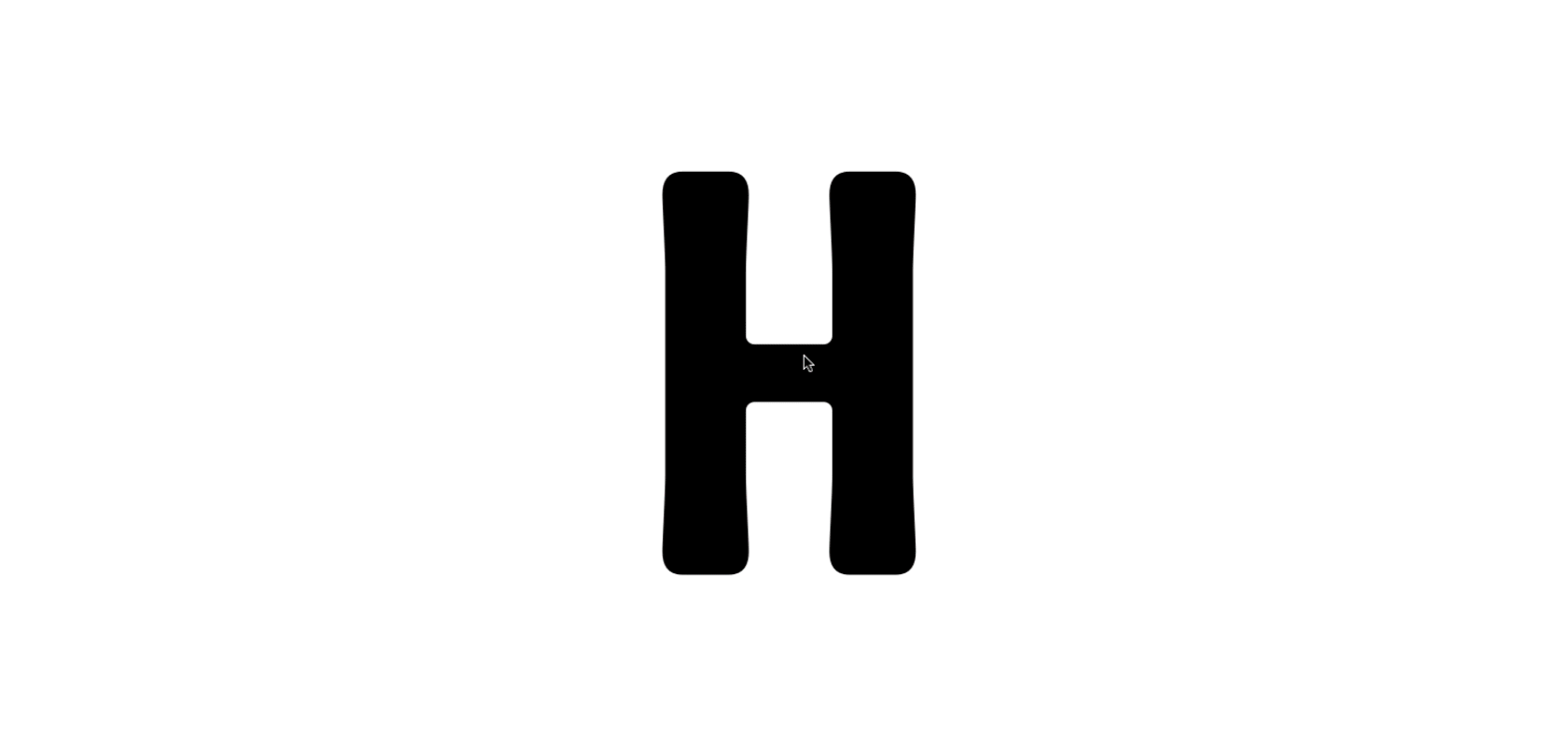
Si observas el Grotesque en la revista “Niva” en cuerpos grandes, notarás que la fuente no estaba diseñada para una redondez tan pronunciada. Sin embargo, en cuerpos pequeños, se producía el aumento de punto, haciendo que los caracteres se vieran más robustos. Como desde el principio nos propusimos preservar los defectos de impresión, mantuvimos estos detalles tal cual estaban.
El diseño del Grotesque nos generó cierta inquietud en cuanto a su flexibilidad, ya que era muy diferente de los sans-serif modernos a los que todos están acostumbrados. A veces nos parecía que quizá sería conveniente suavizarlo un poco, pero al probarlo en composición, vimos que el Grotesque lucía bien y era muy armonioso.
El último toque en el trabajo con el Grotesque fue ajustar el ancho de los caracteres en mayúsculas, ya que se veían más gruesos que los minúsculos. Tuvimos que reducir esto un poco, pero no pudimos eliminarlo por completo, porque en la referencia de la revista los caracteres en mayúscula también se veían un poco más gruesos.
Esta fue otra decisión en favor de la historicidad que tomamos al trabajar en TT Marxiana. En todos nuestros proyectos, buscamos el resultado perfecto, y en este caso, el resultado perfecto era el aspecto histórico imperfecto.

Diferencias en el grosor de los caracteres en mayúsculas y minúsculas
10. Dibujando la Elzevir
La Elzevir se utilizaba en la revista como fuente para encabezados en cuerpos grandes, y por ello se diferenciaba de otras fuentes de la familia por sus formas más precisas, menos afectadas por las deformaciones de impresión. El tamaño de los caracteres en minúsculas y mayúsculas de la Elzevir es el mismo que en la Antiqua, pero es una fuente más ligera y, a diferencia de la Antiqua y el Grotesque, posee numerosos ángulos agudos.
Al igual que al crear la Antiqua, comenzamos a trabajar en la Elzevir dibujando las letras sobre las páginas escaneadas de la revista. Estudiamos las proporciones de los caracteres y seleccionamos los anchos de los astiles, pero nuevamente nos enfrentamos al controvertido tema de las formas de las serifas. En los escaneos de referencia, las serifas estaban desenfocadas, por lo que podían interpretarse tanto como formas redondeadas como elementos completamente rectos.
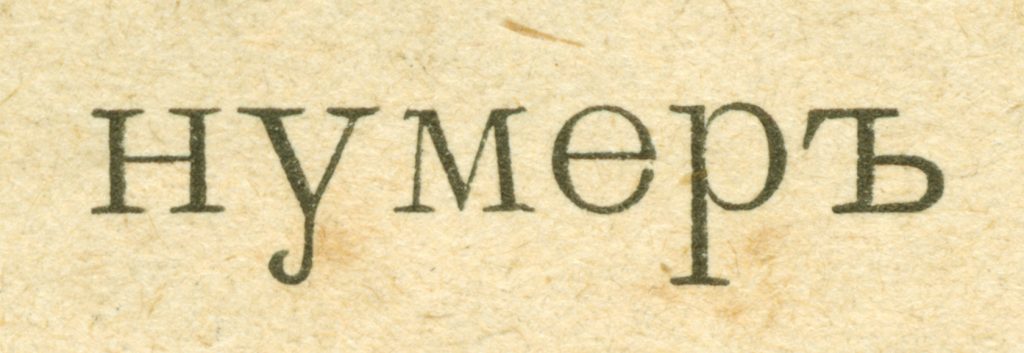
En las primeras etapas del trabajo con la Elzevir, creamos sus serifas con una forma trapezoidal y ángulos agudos, no redondeados. Estas serifas le daban a la fuente un aspecto definido y preciso, pero sentimos que no encajaban bien con otros elementos de las letras, especialmente en los caracteres redondeados, y tampoco armonizaban con las referencias de la revista.
Decidimos hacer las serifas más estrechas y añadirles pequeños redondeos. Estas serifas también se integraron en todos los terminales de los trazos, convirtiéndose en el elemento estilístico básico de la fuente.

Búsqueda de la masa y la forma de las serifas en la Elzevir
Mientras que en las letras a, c, f, r y y de la Antiqua se encuentran terminaciones en forma de gotas, en la Elzevir estas terminaciones no pueden llamarse gotas. Esto se debe a que, a diferencia de las gotas, estos elementos tienen extremos puntiagudos, a los que llamamos «gotas en forma de sable». Dedicamos mucho tiempo a encontrar y perfeccionar la forma de estos elementos: al dibujarlos, tuvimos que encontrar un equilibrio entre la nitidez de la forma que creábamos y mantener la sensación de impresión tipográfica presente en el diseño original.

Aunque la Elzevir en «Niva» se veía más definida que otras fuentes, también había muchas de sus formas presentes. Por ejemplo, las gotas en los caracteres variaban de muy robustas a casi «esqueléticas».
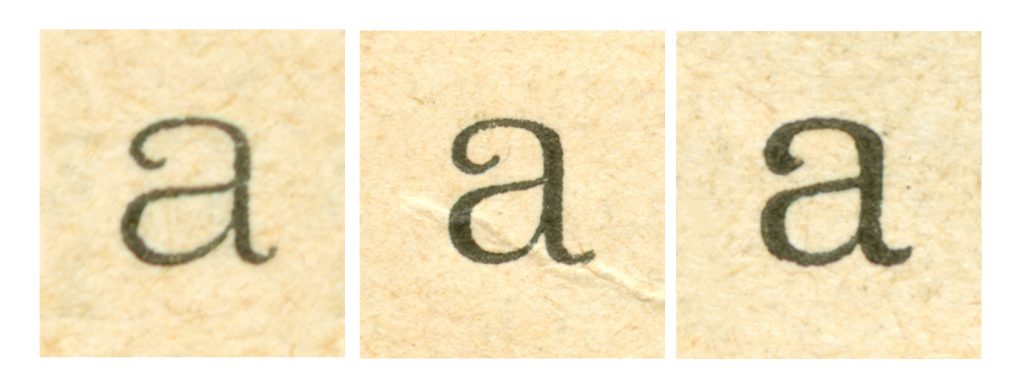
Además, al examinar la revista, se podían encontrar diferentes formas de las letras, por ejemplo, de la letra м. Para preservar estos artefactos, creamos alternantes estilísticos. También había adornos en la fuente que estaban distribuidos sin una lógica aparente.

Una de las características curiosas de nuestra Elzevir son los adornos en los caracteres en mayúsculas. Además, también creamos formas alternativas de caracteres para algunas letras. Al activarlas, en ciertos caracteres la barra cambia a un ángulo, como, por ejemplo, en las letras Аа.

Todos los adornos de la Elzevir pueden dividirse en cuatro grupos: adornos para caracteres redondeados como ОСSUЭЗ; adornos que extienden el asta en letras como HEDFP, entre otras; adornos como extensión de las diagonales en AVXM, etc.; y adornos en RКЯ donde el asta de la letra se convierte en el adorno. En varios casos, añadir un adorno llevó a modificar el grafema del carácter, como ocurrió, por ejemplo, en la letra B.
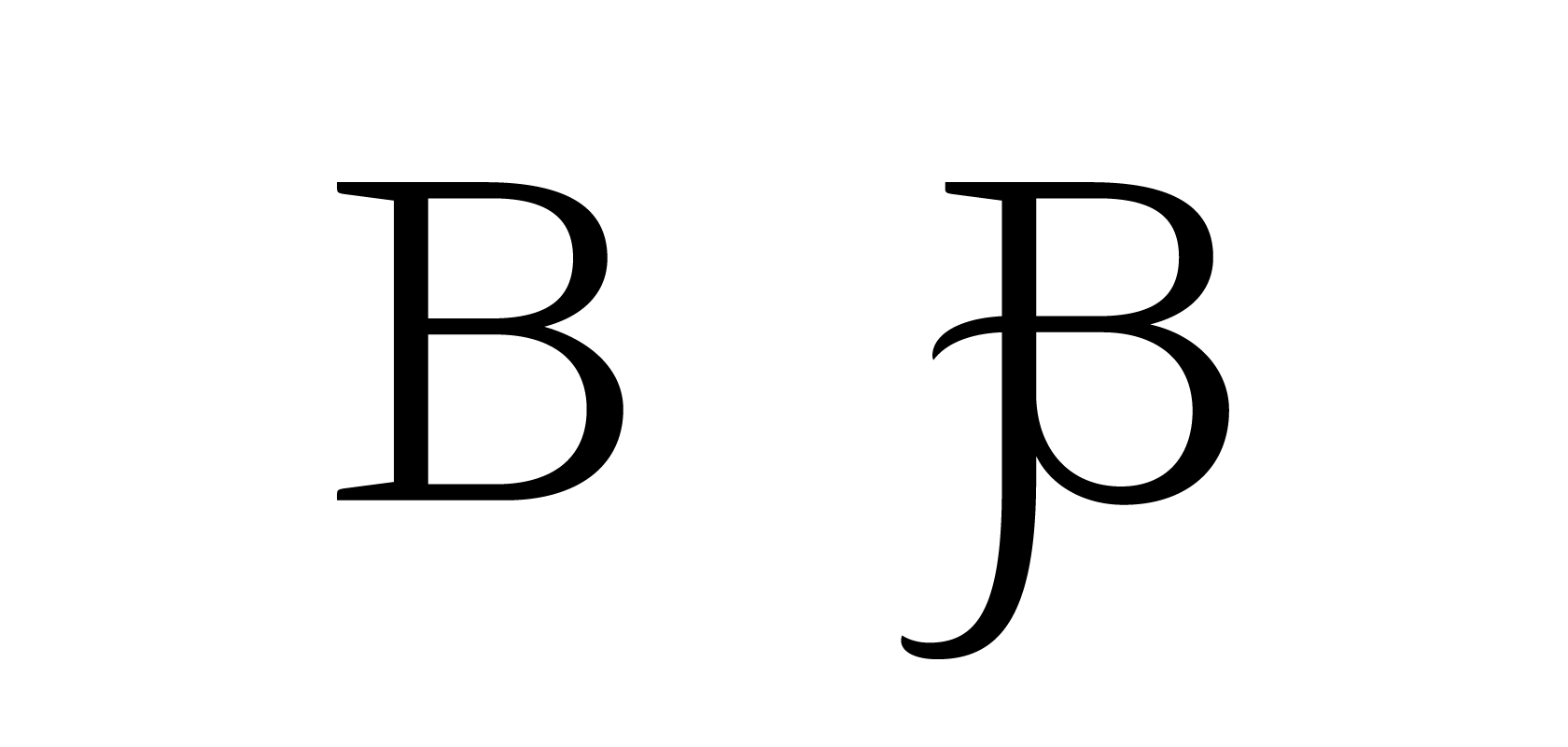
El conjunto alternativo con adornos es necesario para escribir las primeras letras de las palabras, tal como se hacía en la revista.
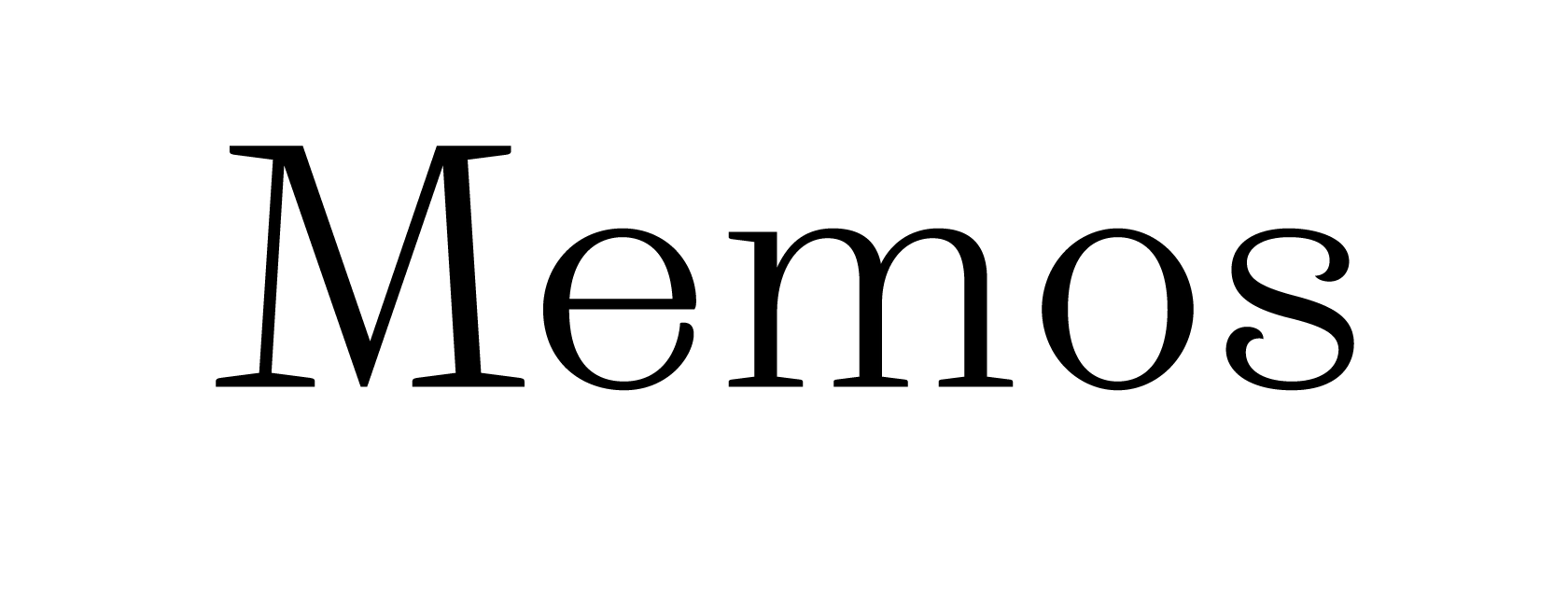
Un ejemplo del uso de las letras alternativas «M» y «s»
Dado que las versalitas en la Elzevir solo estaban presentes en los primeros números de la revista, tuvimos que revisar todos los contornos y proporciones para corregirlos y hacer que la fuente se viera unificada y armoniosa. Durante la edición, descubrimos que el grosor de las serifas en las versalitas era menor que en otros casos y que el ancho de los caracteres no coincidía con nuestro sistema establecido.
Corregimos todas las discrepancias o encontramos formas alternativas para ellas. Además, había otras discrepancias más evidentes en la fuente. Por ejemplo, en las letras К y З en las versalitas había gotas habituales al final de los trazos, mientras que en la composición principal de caracteres las gotas tenían la peculiar forma de sable.
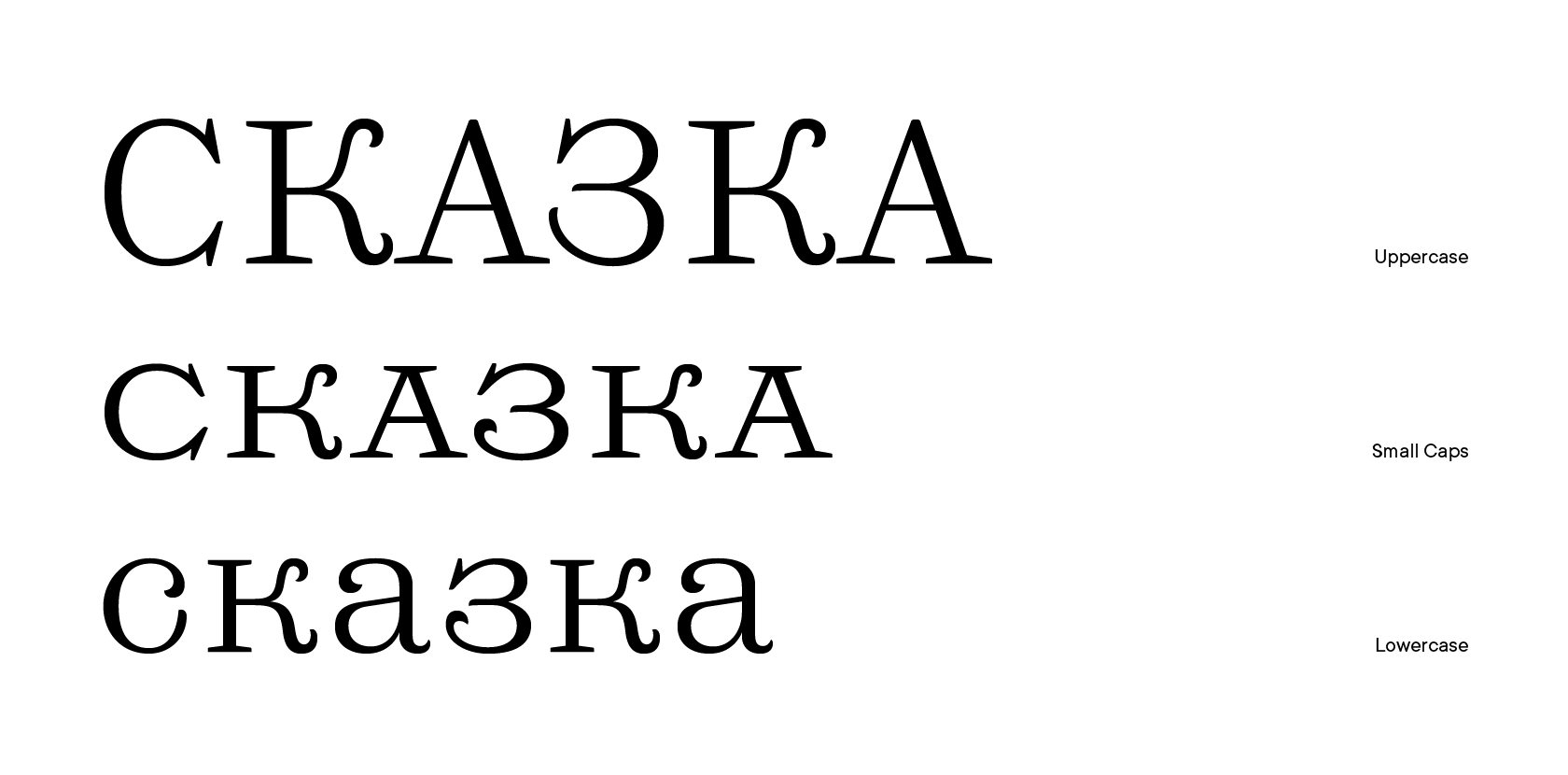
Tras una inspección visual y pequeños ajustes en los contornos y métricas, la fuente adquirió su impresionante apariencia. Fue entonces cuando dimos por concluida solemnemente la parte principal del trabajo en los contornos del proyecto.
11. Kerning
Para ser honestos, al principio consideramos no añadir kerning a las fuentes de la familia TT Marxiana. Esto se debía a que, en las fuentes metálicas de la época, las posibilidades de compensación obligatoria en la configuración eran limitadas. Por ello, en las copias impresas originales, el texto a veces resultaba demasiado denso o demasiado disperso.
Por un lado, nos resultaba muy tentador replicar este efecto en TT Marxiana. Por otro lado, también entendimos que, según los criterios de calidad modernos, esto parecería un defecto en el texto, ya que incluso en los ajustes antiguos estas brechas no resultaban muy atractivas.
Desde el principio hemos tomado este proyecto con mucha seriedad y respeto, por lo que intentamos desarrollar una metodología de kerning personalizada diseñada específicamente para TT Marxiana.
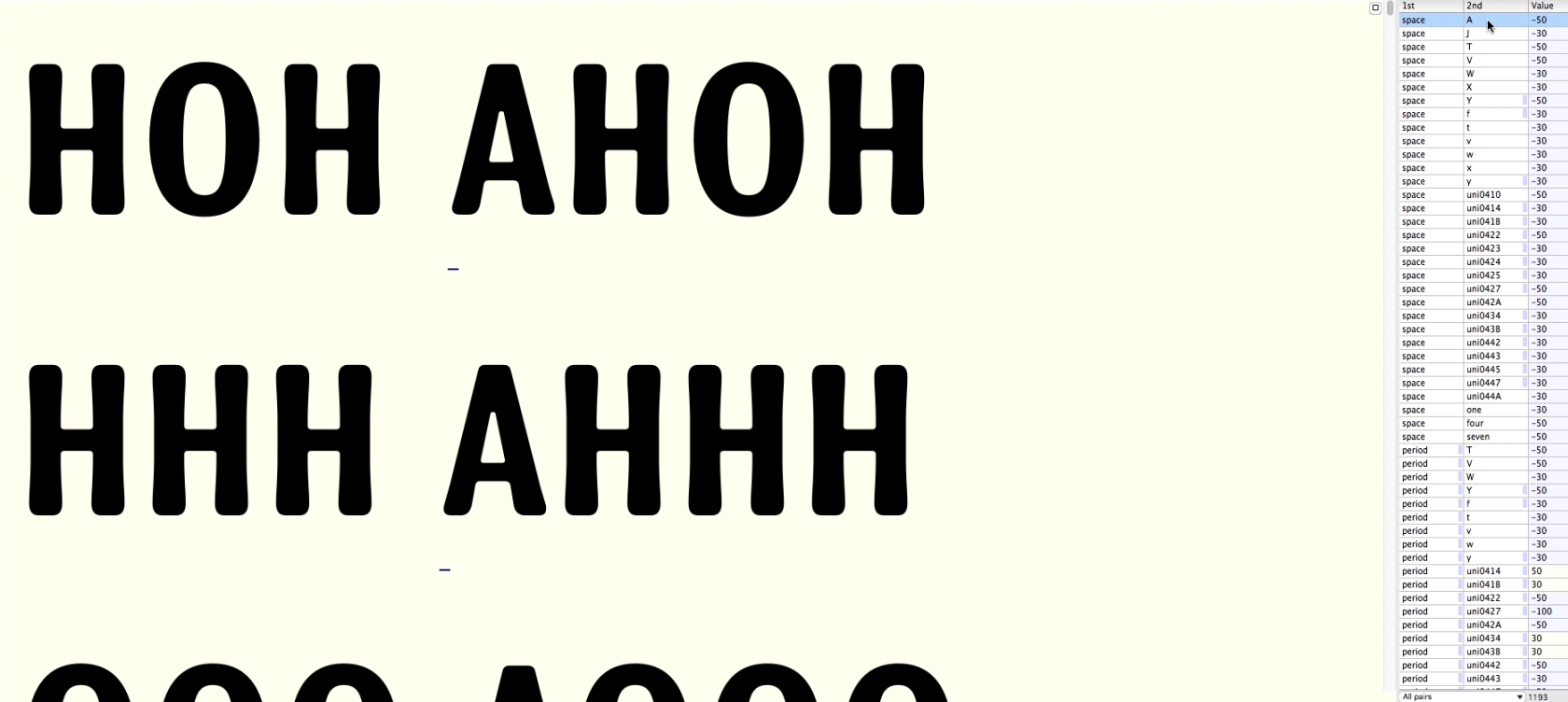
Primero creamos las clases de kerning. Estas son grupos de caracteres en los que el primer carácter se configura para emparejarse en kerning con otros caracteres, y estos otros caracteres «heredan» el kerning del primer carácter. Un ejemplo típico de una clase de kerning es: а’ à á â ã ä å ā ă ą. En esta clase, el kerning se realiza para la primera letra latina «a», y el resto de los caracteres aplican el mismo kerning.
Al trabajar en el kerning, creamos clases separadas para todo el alfabeto cirílico y latino, incluidos sus caracteres con diacríticos. Las clases más interesantes se crearon para los caracteres no alfabéticos: por ejemplo, la clase _bottom incluye el punto, la coma, las marcas de elisión y las comillas invertidas inferiores. La clase _middle incluye el guion, el guion largo y la raya; y la clase _top incluye todas las comillas superiores. También creamos clases para las comillas angulares cirílicas y los paréntesis en las fuentes de la familia (los tres tipos en una misma clase).
Después pasamos a un largo período de creación manual de kerning, que requirió mucha persistencia. Para el conjunto de mayúsculas latinas, ajustamos el kerning de los pares AA a ZZ y para las minúsculas, los pares aa a zz. Para el alfabeto cirílico, ajustamos los pares АА a ЯЯ, así como los pares en minúsculas аа-яя. También creamos conjuntos separados de pares de kerning para combinaciones «mayúscula + minúscula», como las que pueden verse en nombres o primeras palabras de una oración. Para el cirílico, esto fue Аа-Яя, y para el alfabeto latino fue Aa-Zz. De la misma manera, se hizo el kerning en Elzevir para las versalitas. Además, configuramos el kerning para los números: en cada fuente, ajustamos los pares de 00 a 99.
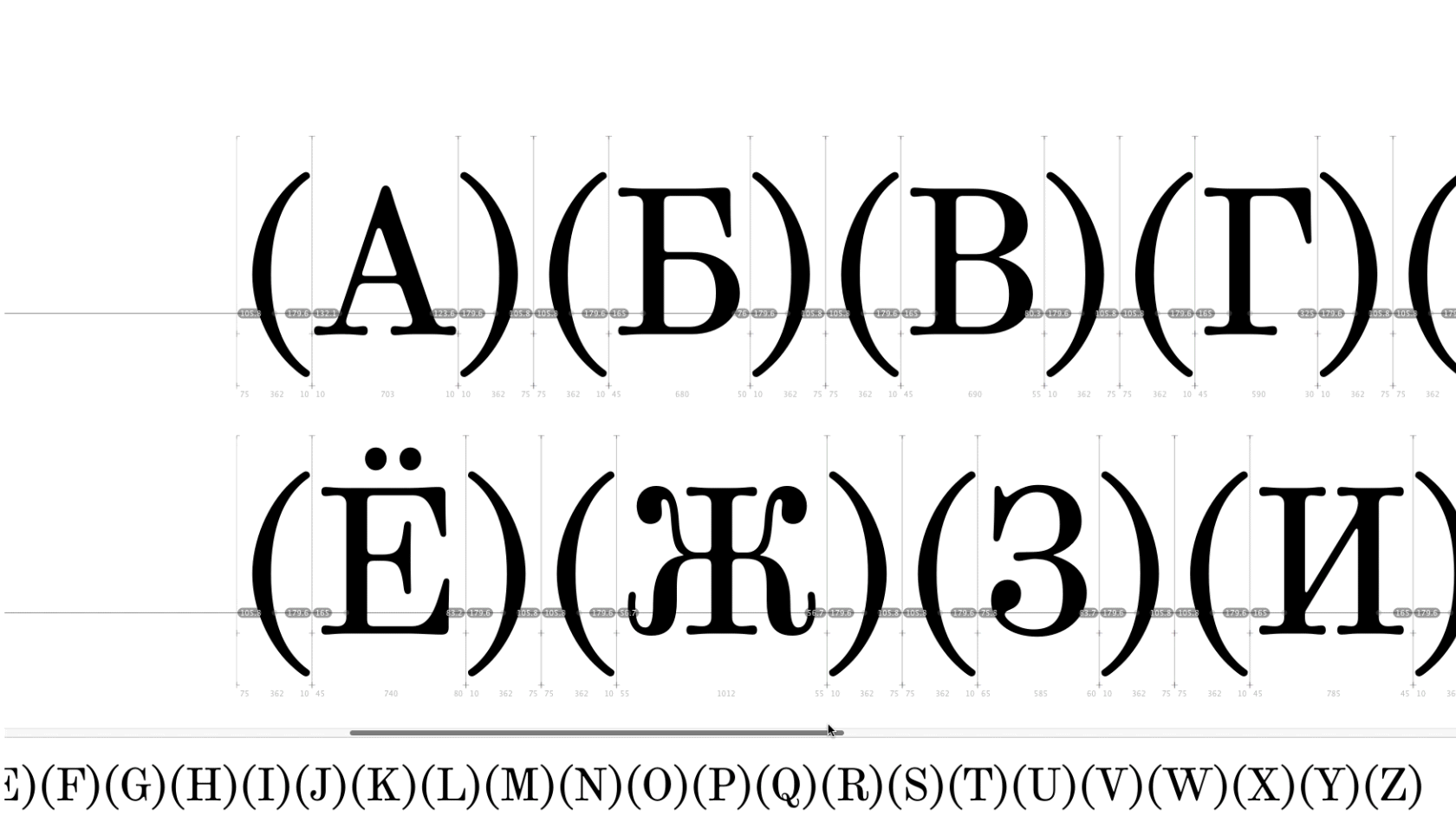
Para finalizar, solo nos faltaban las combinaciones de caracteres especiales con caracteres de texto. Por lo tanto, todas las clases de caracteres especiales se ajustaron en kerning junto con el resto: X, X., -X, X-, ‘X, X’, (X, X), «X, X» (sustituyendo X por cada mayúscula y minúscula latina, cada mayúscula y minúscula cirílica, cada versalita latina, cada versalita cirílica y todas las cifras, incluidas las cifras en estilo antiguo).
En total, hubo más de 1000 pares de kerning en el Grotesque y más de 1300 pares de kerning en la Antiqua.
12. Elementos decorativos de la fuente
Para comenzar, organizamos y agrupamos lógicamente los elementos decorativos (esquinas de los bordes) para el Grotesque invertido. Ahora se colocaron en el mapa de caracteres de la fuente de la siguiente manera: elemento superior izquierdo, superior derecho, inferior izquierdo e inferior derecho del marco de inscripción de cuatro partes. Estas esquinas de los bordes se utilizan cuando el tipo invertido se establece en dos líneas. En ese caso, el usuario debe regular manualmente el interlineado y el espaciado entre letras para que el bloque de texto luzca unificado.

Para el tipo invertido de una sola línea, agrupamos las esquinas de los bordes izquierdo y derecho como un par.

Las funciones OpenType en nuestras fuentes siguen un estándar definido y están incluidas en todas las fuentes de TT Marxiana. Estas funciones son CASE, ORDN, FRAC, SUPS, SINF, NUMR, DNOM, TNUM, ONUM, SALT, SS01-SS05, LOCL, LIGA, CALT. Las funciones OpenType SALT y SS01 son duplicadas: al usar SALT (o SS01) en el Grotesque, el texto estándar, independientemente de su uso de mayúsculas o minúsculas, se cambia al invertido, que solo contiene caracteres en mayúsculas. En la Antiqua, estas dos funciones activan los caracteres alternativos con imitación de aumento de punto.

También organizamos los elementos decorativos de la Antiqua para facilitar la búsqueda de los elementos necesarios del marco. Además, para permitir configurar solo la parte superior del marco utilizando únicamente la herramienta «Texto», añadimos esquinas derechas del marco para los casos en que este elemento refleja la esquina izquierda.

Variedad de marcos en la Antiqua
Al probar los marcos en editores gráficos, encontramos dos tipos de marcos con elementos de esquina que no eran completamente simétricos. Solucionamos este problema añadiendo los detalles faltantes.
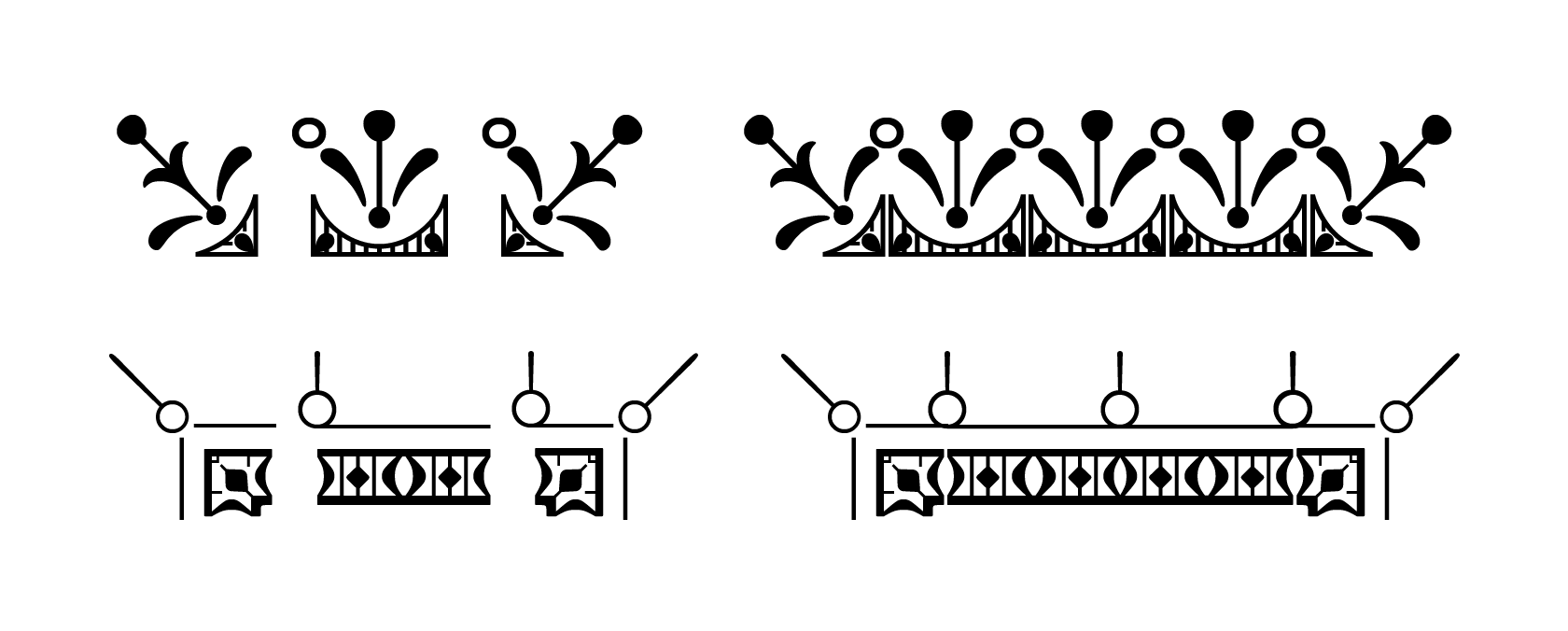
Durante las pruebas de las fuentes, nos encontramos con varios problemas interesantes. Por ejemplo, en la web, a menudo se utiliza el espacio de no separación en lugar del espacio normal, por lo que tuvimos que tener esto en cuenta al codificar la función. Lo configuramos de manera que, en el tipo invertido, fuera posible escribir varios espacios consecutivos y que todos se convirtieran en un único sólido negro requerido.
También nos enfrentamos al problema de exportar la fuente en formato .otf con la opción Remove Overlap activada. Descubrimos que había un elemento decorativo que tenía un ancho de aproximadamente diez mil unidades, pero el script solo puede procesar hasta 8191 unidades. Por lo tanto, tuvimos que excluir este glifo aplicando un parámetro personalizado.
13. Ortografía prerrevolucionaria
La función OpenType más inusual que tiene la familia de fuentes TT Marxiana es la conversión de la ortografía moderna a la norma anterior a 1917. Esta función es bastante experimental y decorativa, ya que es imposible incluir en la fuente todas las palabras donde se produce la sustitución sin afectar su tamaño y el tiempo de desarrollo.
Esta función incluye muchas alternativas contextuales, pero dado que ya habíamos utilizado la función CALT, decidimos incluir este código en el conjunto estilístico SS02.
Para aprender las reglas de la ortografía prerrevolucionaria, utilizamos varias fuentes, como un artículo del portal educativo arzamas.academy titulado Какъ писать въ старой орѳографіи? y una entrada de Wikipedia. Para probar algunas palabras, recurrimos a la página slavenica.com.

Primero, delineamos las alternativas para las excepciones: ‘ф’ a ‘ѳ’ (fita); ‘и’ antes de una vocal a ‘i’ (i decimal); varias sustituciones de ‘е’ a ‘ѣ’ (yat). Dado que las excepciones con ‘ѵ’ (izhitsa) son muy raras, no las tomamos en cuenta.

Luego añadimos sustituciones en los prefijos ‘рас- (ras-)’, ‘ис- (is-)’, ‘вос- (vos-)’, ‘бес- (bes-)’, ‘черес- (cheres-)’, que en la versión anterior a la reforma se escribían con una -з- (z). Para sustituir ‘е’ con ‘ѣ’ (yat), encontramos todas las palabras excepcionales en los poemas publicados en el artículo de arzamas.academy, definimos sus raíces gramaticales y consideramos posibles variaciones de letras que siguen a la raíz en diferentes tiempos y casos gramaticales. También tomamos en cuenta las mayúsculas y minúsculas de las palabras dadas.
Además, codificamos los adverbios, pronombres y preposiciones frecuentes que contienen ‘ѣ’ (yat), el sufijo ‘-ейш- (-yeish-)’ (que indica superlativo en adjetivos y participios), así como las terminaciones ‘-еть (-yet)’ y ‘-еться (-yetsya)’. En las palabras que terminan en ‘-него (-nego)’ y ‘-ого (-ogo)’, especificamos las sustituciones ‘-няго (-nyago)’ y ‘-аго (-ago)’. Tuvimos que sacrificar algunas reglas para las terminaciones y sufijos y no incluirlas, para evitar especificar un número interminable de excepciones — después de todo, nuestra tarea era crear una fuente y no un sistema de traducción automática.
14. Hinting
Como en todas nuestras demás fuentes contemporáneas, intentamos hacer el hinting de TT Marxiana con la máxima calidad.
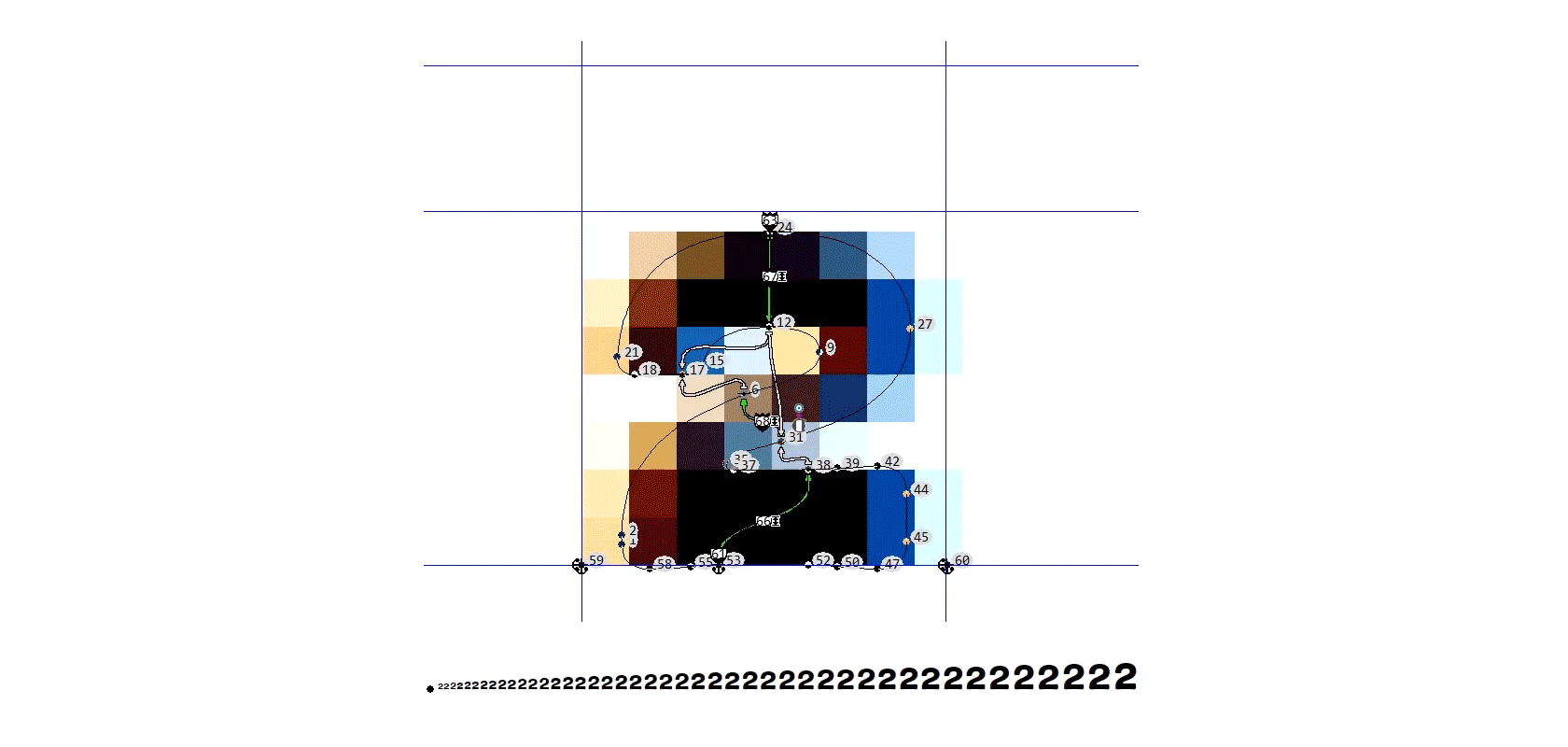
Dado que el Grotesque fue el primero en la fila para el hinting, también mostraremos ejemplos de esta fuente. Primero, restauramos el espacio blanco interno de los caracteres.

Luego, restauramos algunos de los contornos.

Sincronizamos el grosor de los astiles dentro de un mismo glifo y entre todos los glifos.

Además, eliminamos valores atípicos, restauramos las alturas de los caracteres y, por supuesto, también corregimos las superposiciones de los diacríticos.

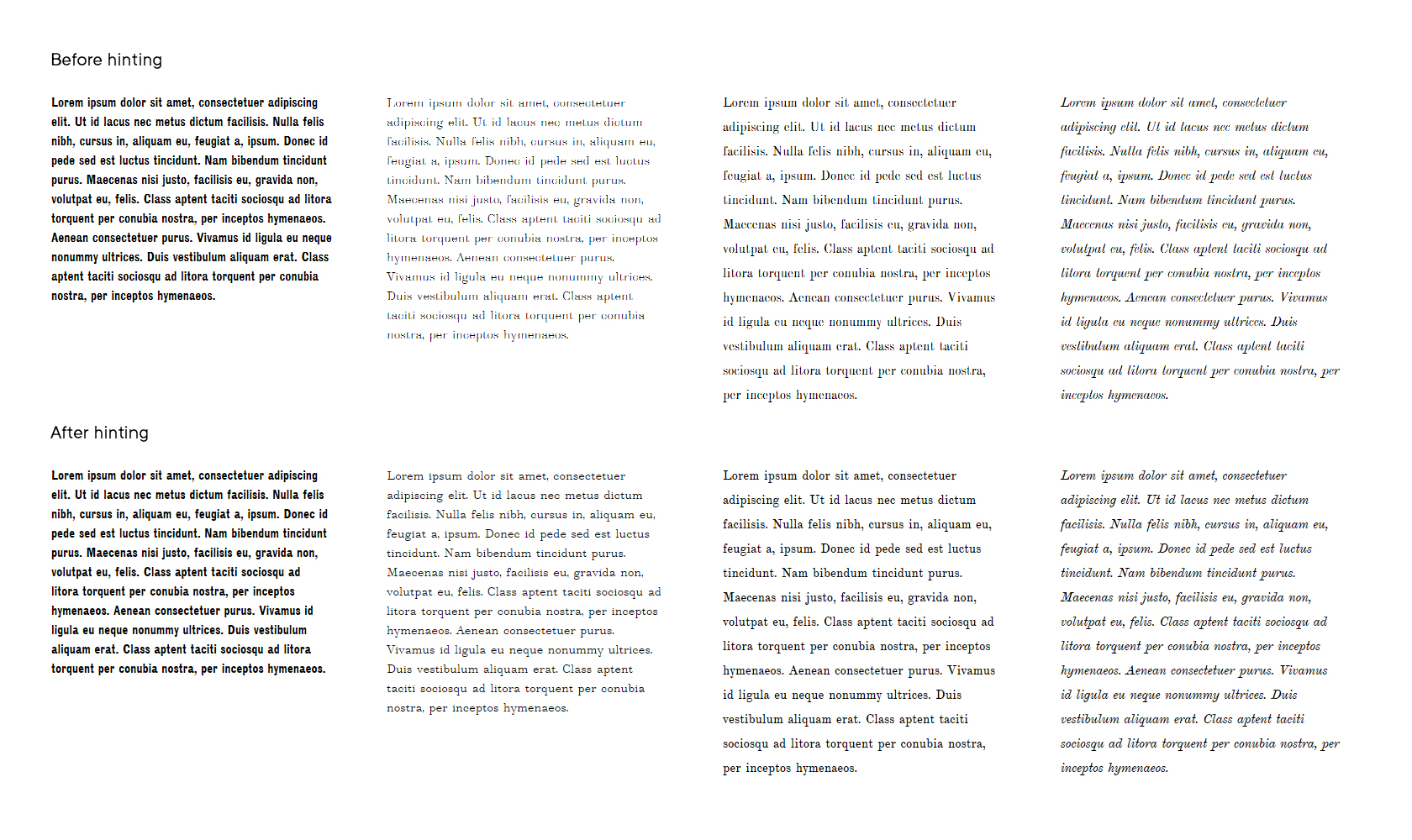
15. Pruebas de la fuente tipográfica
Todas las pruebas de TT Marxiana pueden dividirse en varias etapas:
- Edición de la composición de glifos al codificar y probar funciones OpenType
- Pruebas de las funciones OpenType en diferentes software
- Verificación del hinting en diferentes tamaños
- Realización de pequeños cambios en la información de la fuente (Font Info)
- Edición y adición de pares de kerning
- Edición de la función de ortografía prerrevolucionaria mediante la adición de ligaduras auxiliares y la reescritura del código de la función
Durante las pruebas, añadimos la mayor cantidad de glifos nuevos en la Elzevir. Estos incluyen, por ejemplo, cifras tabulares, alternativas de la “s” con diacrítico, todos los glifos con diacríticos para el conjunto estilístico SS01 que contiene adornos, y las “A” en versalitas. Para mayor conveniencia, todos los nuevos caracteres se marcan en rosa y se integran en el código de las funciones.
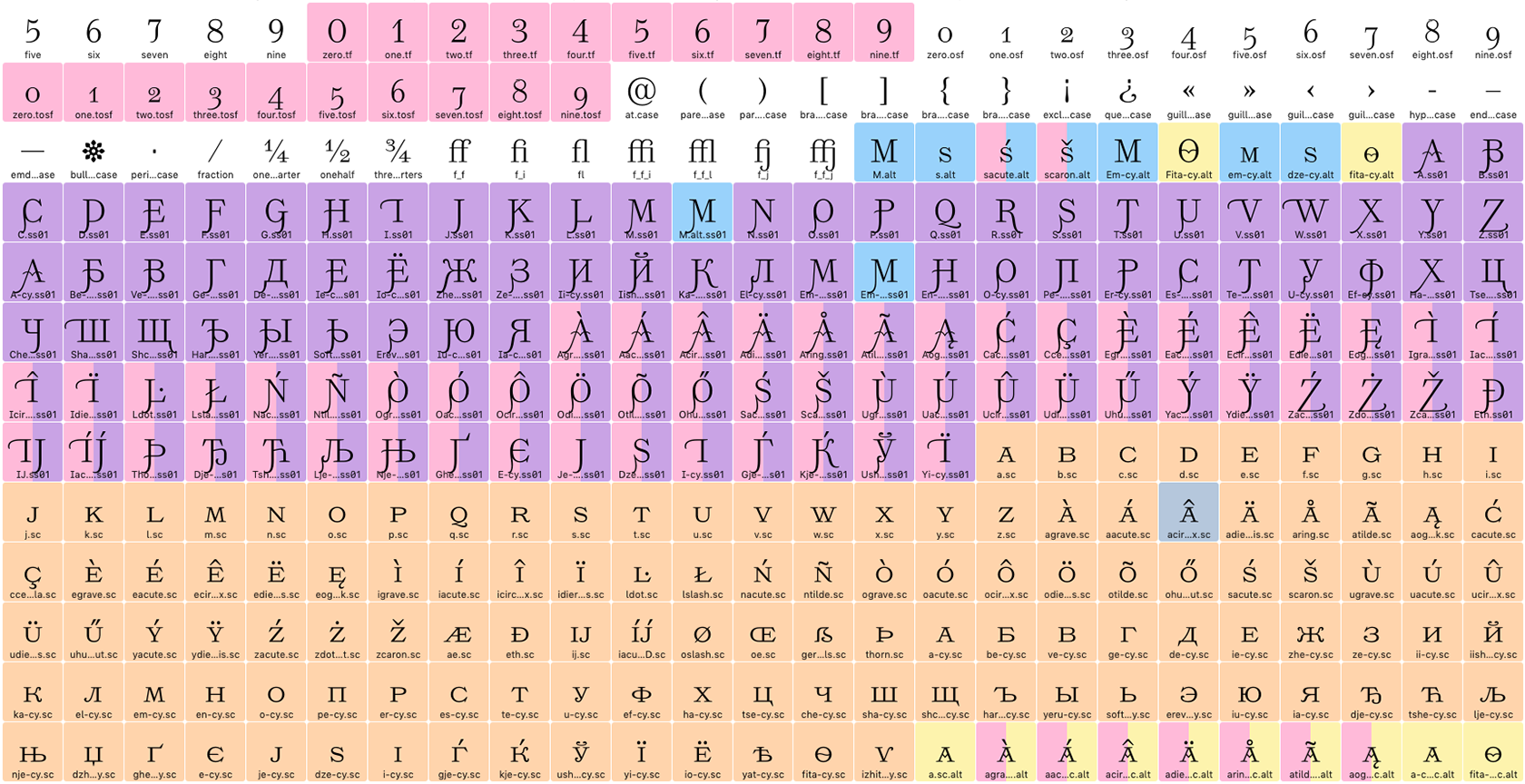
Probamos principalmente las funciones OpenType en editores gráficos. Para ello, creamos una plantilla para cada fuente de la familia TT Marxiana que demostraba todas las combinaciones posibles de funciones activadas.
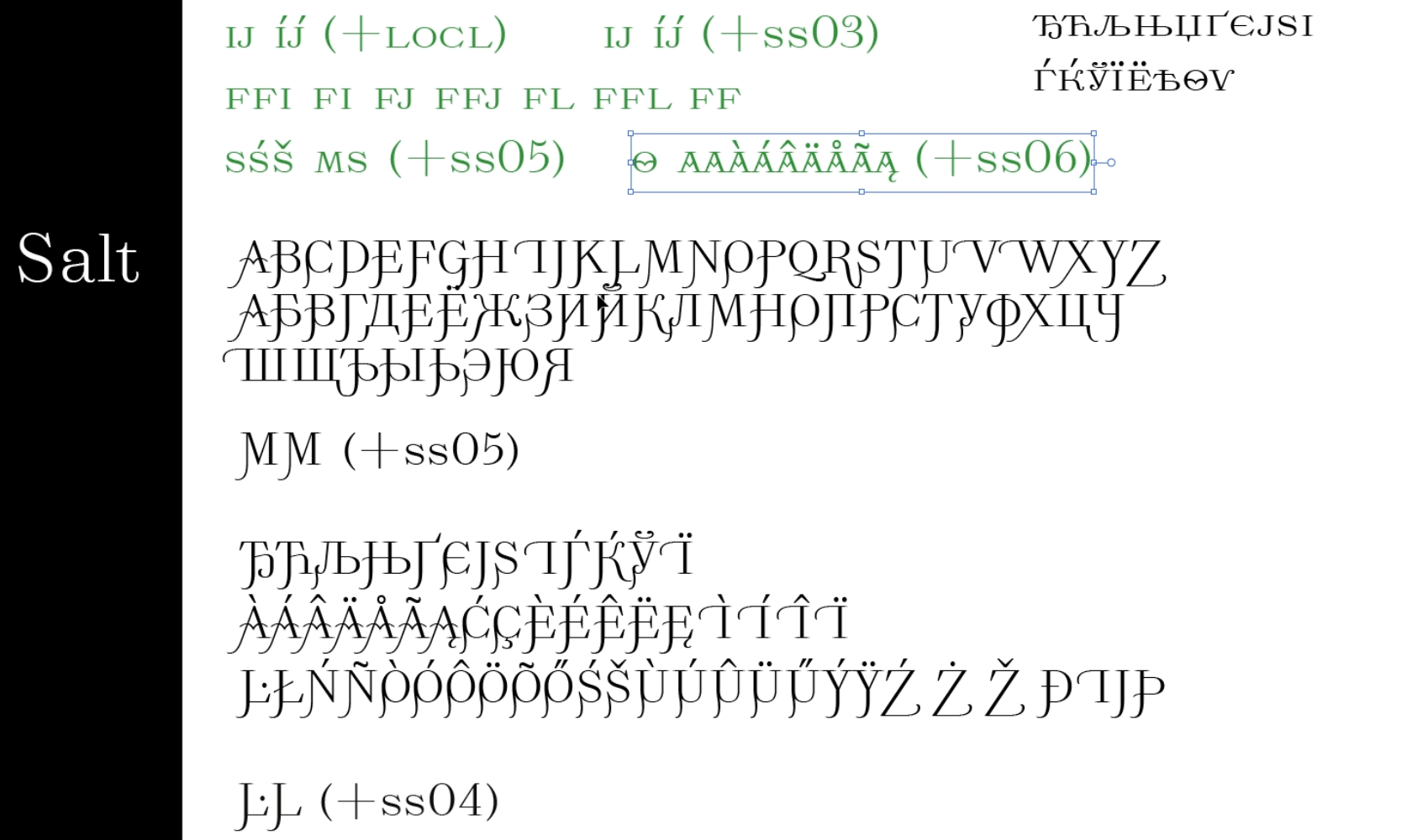
Una de las tareas imprescindibles al realizar pruebas es la verificación del hinting. Además de utilizar nuestras propias herramientas de prueba de hinting, también empleamos el sitio serpentype.ru. En la pestaña de hinting, añadimos todos los glifos Unicode para cada tamaño disponible, desde 48 hasta 12 píxeles. A continuación, examinamos cuidadosamente cada carácter para identificar posibles defectos, y si encontrábamos alguno, los enviábamos a nuestro programador para que corrigiera el hinting. Después, revisábamos nuevamente los caracteres corregidos y también comprobábamos los caracteres activados mediante funciones.
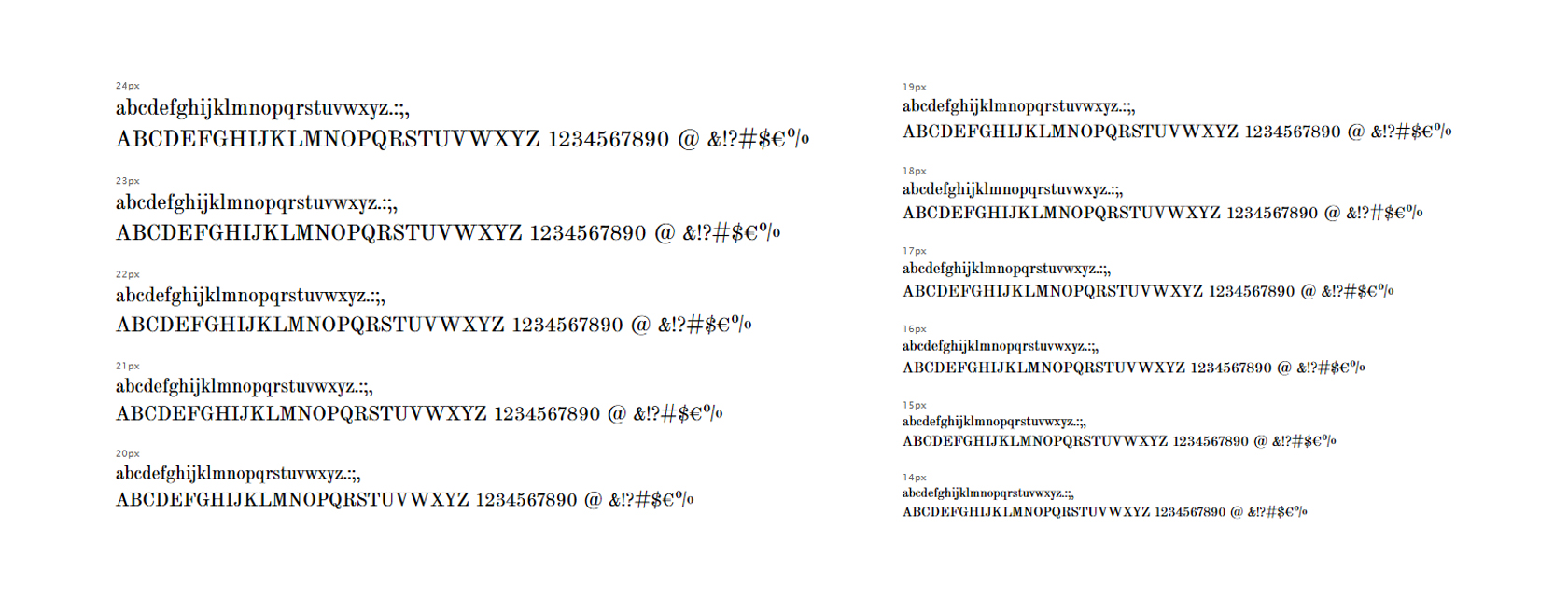
Al mismo tiempo, asignamos a todos nuestros colegas la tarea de probar la fuente. Como resultado, encontramos más defectos que también fueron eliminados posteriormente.
Por ejemplo, en la Antiqua y la Antiqua Italic, el tamaño del puntero y la Bounding Box eran desproporcionadamente mayores que los glifos principales debido a elementos decorativos muy altos. Para solucionar este problema, tuvimos que eliminar las partes verticales de las esquinas decorativas del marco.
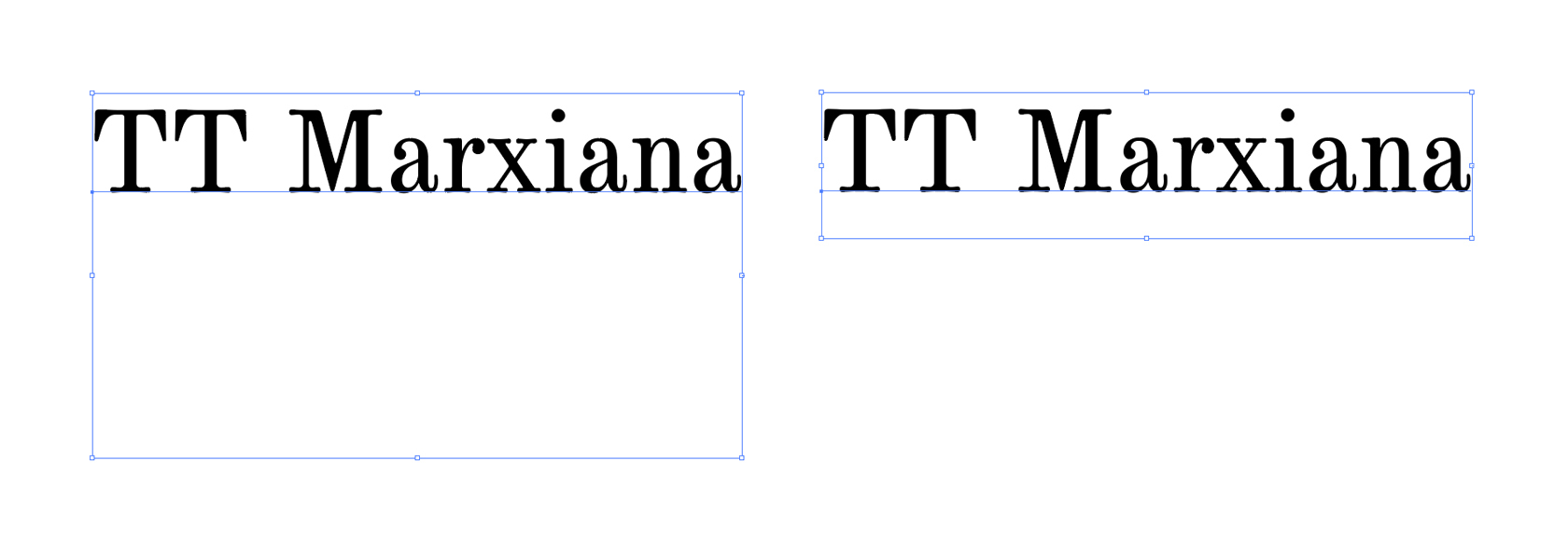
También revisamos y editamos los grupos de kerning y añadimos varios pares de kerning nuevos.
Lo último que hicimos fue cambiar parcialmente el principio de funcionamiento de la ortografía prerrevolucionaria en el conjunto estilístico SS02. Inicialmente, codificamos la sustitución «uno a muchos» en la función para añadir el signo duro a las palabras que terminan en una consonante. Sin embargo, esta sustitución no funcionaba «de inmediato» en los programas de Adobe. Para activarla, el usuario tenía que ir a la configuración, marcar una opción, y luego, en el panel «Párrafo», cambiar el tipo de enlace — solo entonces la función funcionaba correctamente.
Queríamos facilitar la vida a nuestros usuarios, por lo que añadimos ligaduras auxiliares de varios tipos a cada fuente de la familia. Estos tipos de ligaduras eran: “Consonante mayúscula + Signo duro mayúscula”, “Consonante mayúscula + Signo duro minúscula”, “Consonante minúscula + Signo duro minúscula” y, en el caso de la Elzevir, también incluimos “Consonante mayúscula + Signo duro en versalitas”. En total, añadimos unas 298 ligaduras auxiliares en nuestras cuatro fuentes.
También editamos significativamente el código de la función, y ahora, en lugar de usar la sustitución «uno a muchos», utiliza la sustitución «uno a uno», gracias a lo cual la función funciona de la misma manera en todos los programas sin necesidad de pasos adicionales.
16. Resultados del proyecto
El proyecto TT Marxiana comenzó en el verano de 2018 y, desde sus inicios, se diferenció de los tradicionales proyectos de TypeType, ya que queríamos preservar la identidad histórica de la fuente. Como nunca antes habíamos reconstruido una fuente a partir de referencias históricas en papel con tanta atención al detalle, nos tomó dos años completar el proyecto.
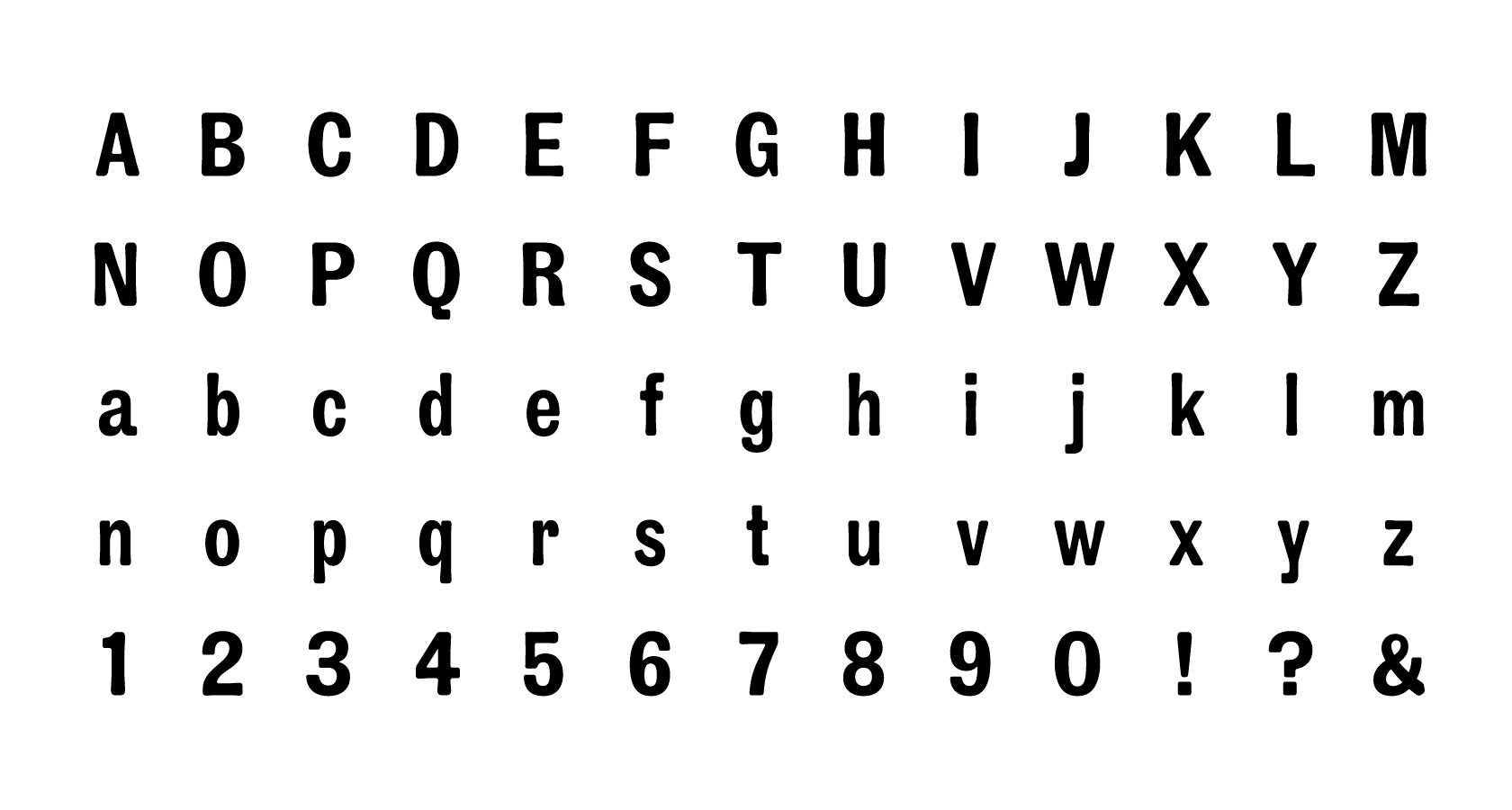
Trabajando en este proyecto, hemos aprendido mucho e incluso revisado algunos de los procesos de trabajo en nuestro estudio. Esperamos que hayan disfrutado leyendo esta historia de creación de la fuente.
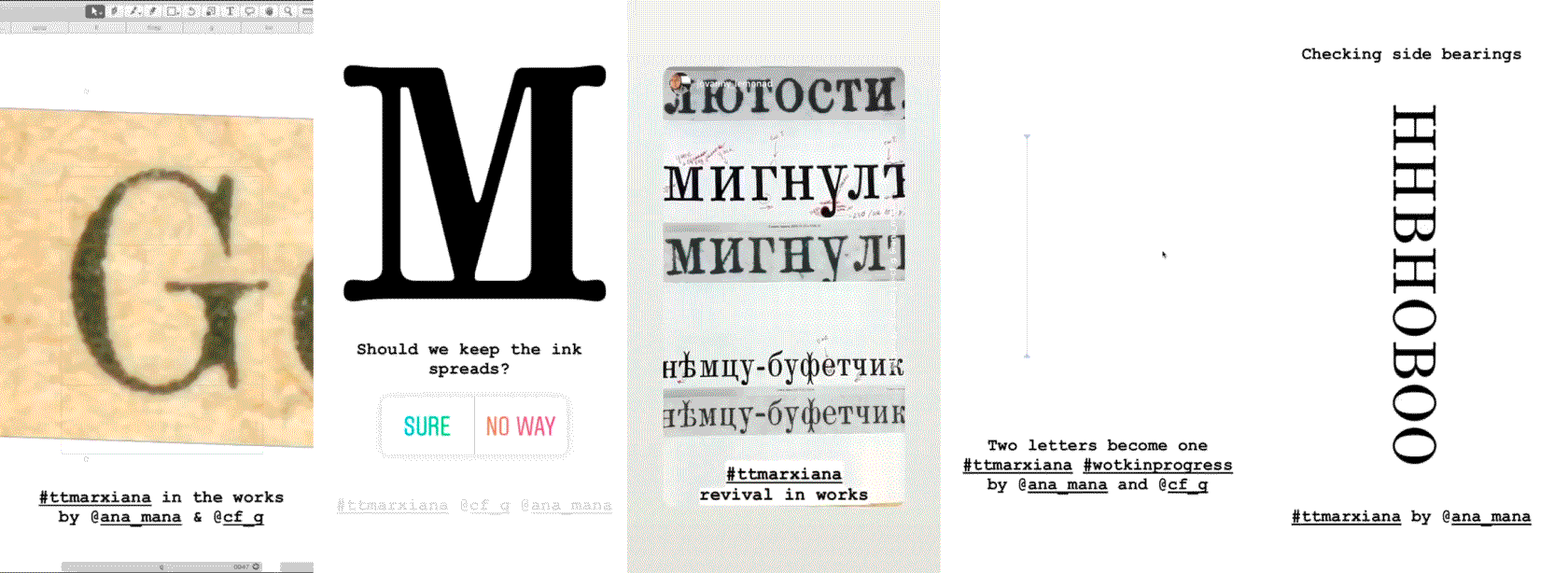
Estaremos encantados de conocer sus opiniones, responder a sus preguntas o recibir sugerencias sobre qué debería ser el tema de nuestro próximo artículo.

Equipo de TT Marxiana
Un equipo de siete personas trabajó en la creación de la familia tipográfica TT Marxiana, compuesto por diseñadores de fuentes, ingenieros de fuentes y gestores. La lista completa de participantes en el proyecto es la siguiente:
Ivan Gladkikh — director técnico
Yulia Gonina — gerente de proyecto
Marina Khodak — directora de arte, diseñadora principal de tipografía
Anna Tikhonova — diseñadora principal de tipografía
Nadyr Ralhimov — diseñador de tipografía
Victor Rubenko — ingeniero técnico, programador, especialista en hinting y simplemente un villano
Yuri Nakonechny — ingeniero técnico, probador de depuración
Enlaces útiles de TT Marxiana
PDF specimen | Presentación gráfica | Prueba y compra TT Marxiana
Contacta
Si tienes alguna pregunta, simplemente escríbenos a marketing@typetype.org y estaremos encantados de responderte.



